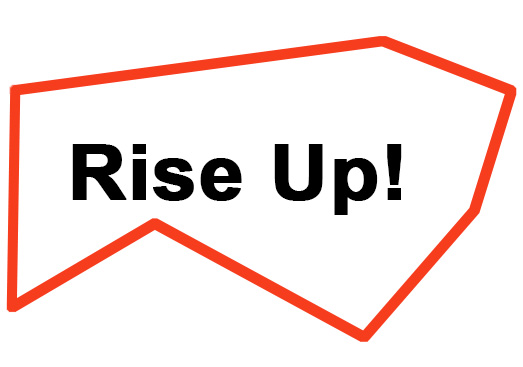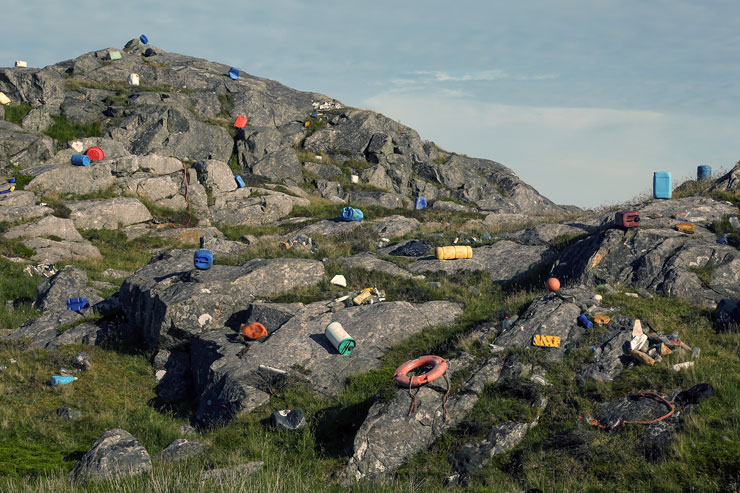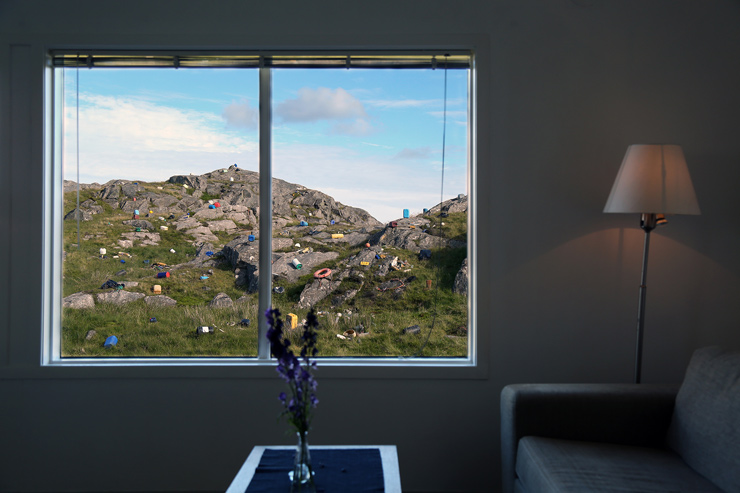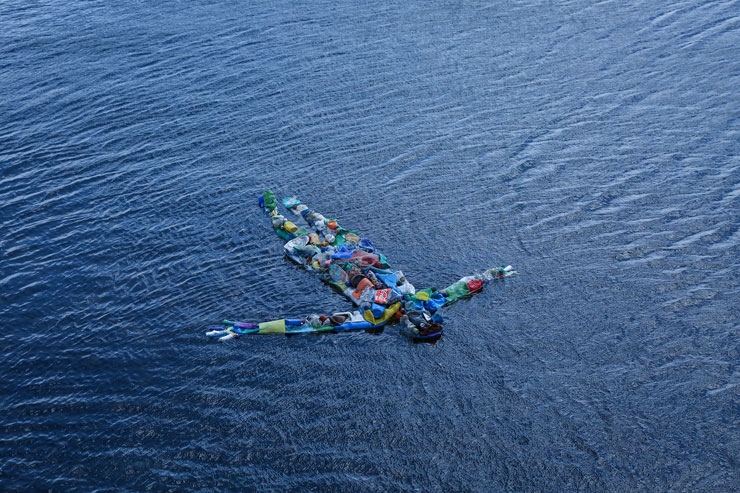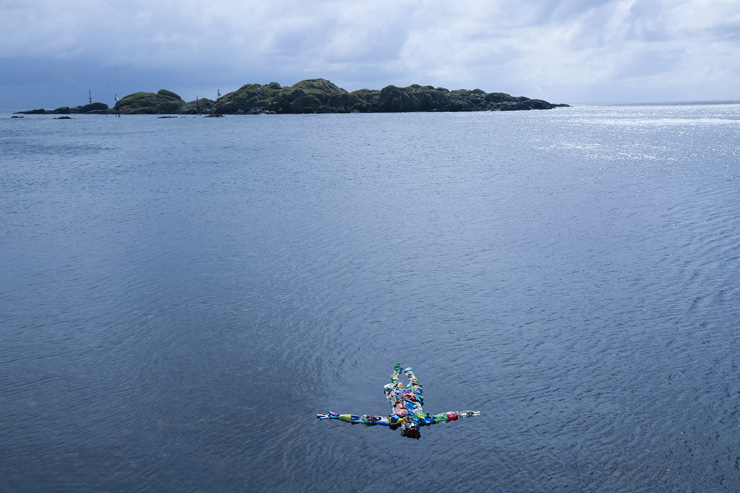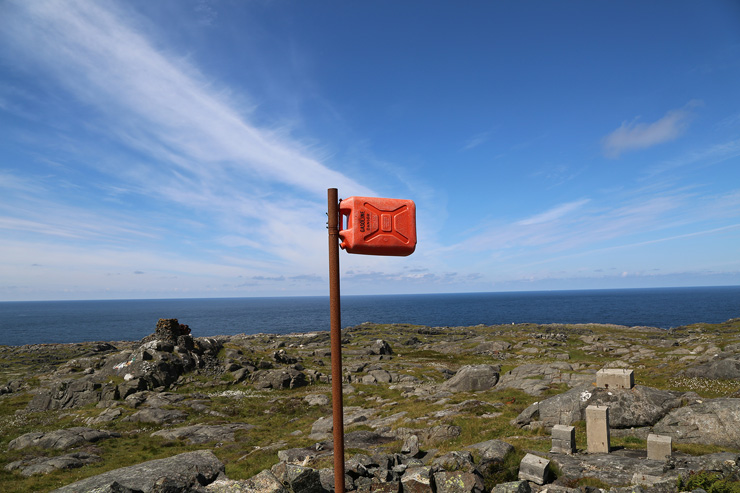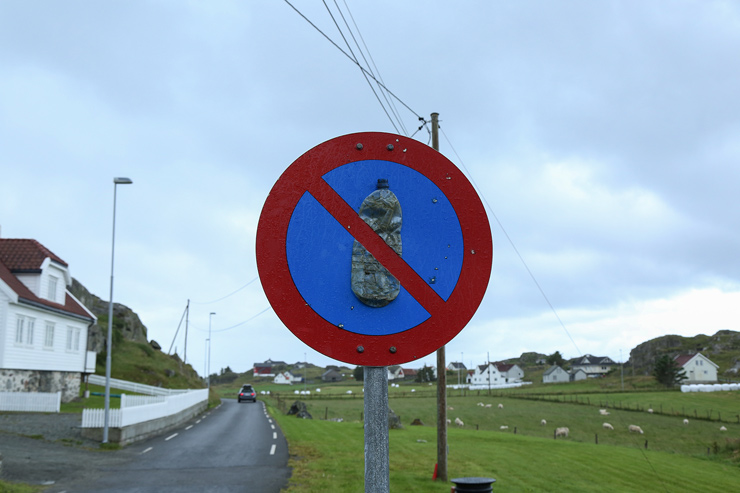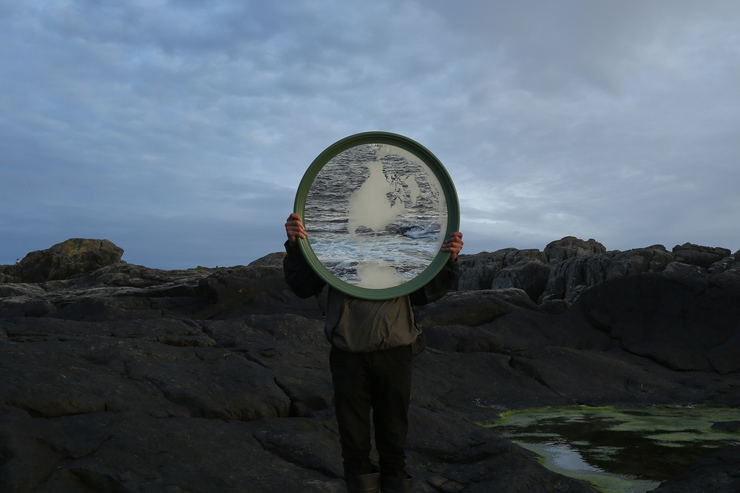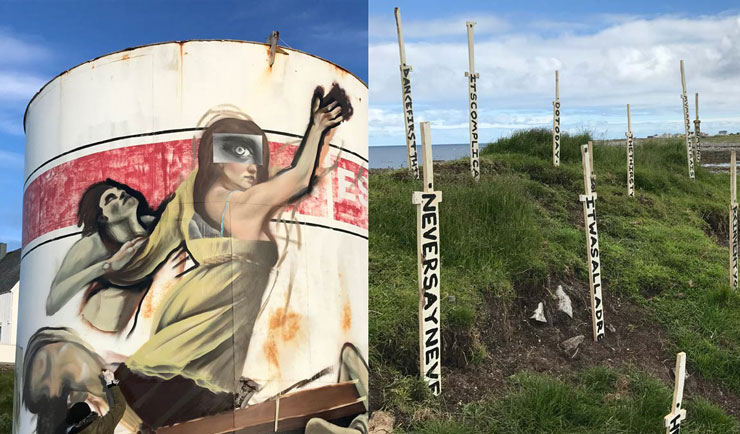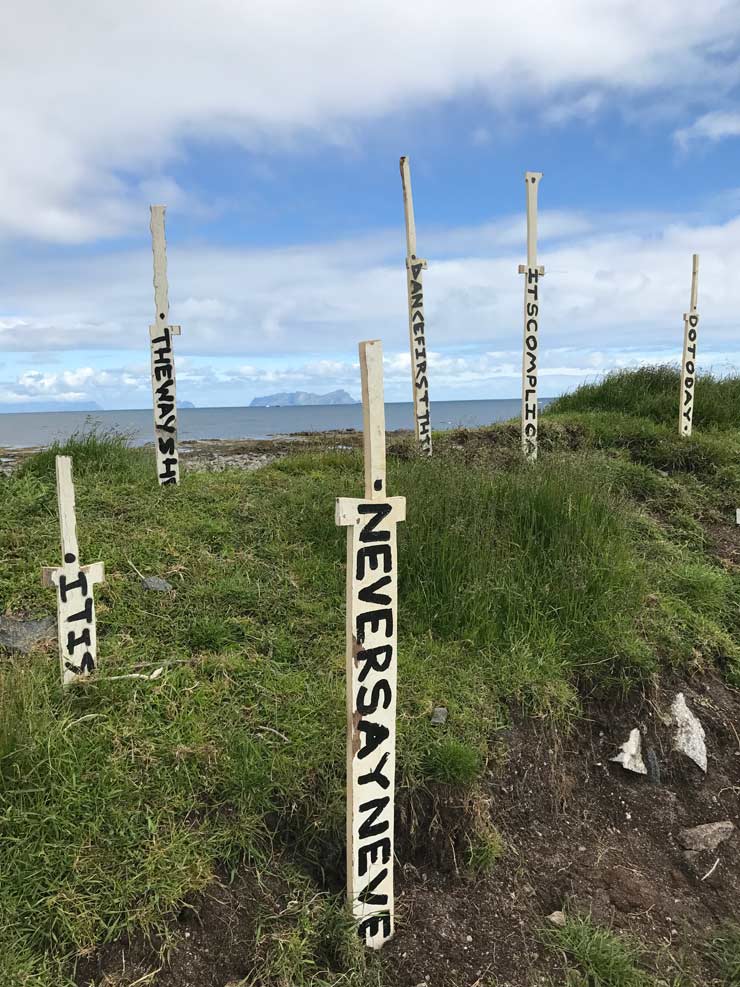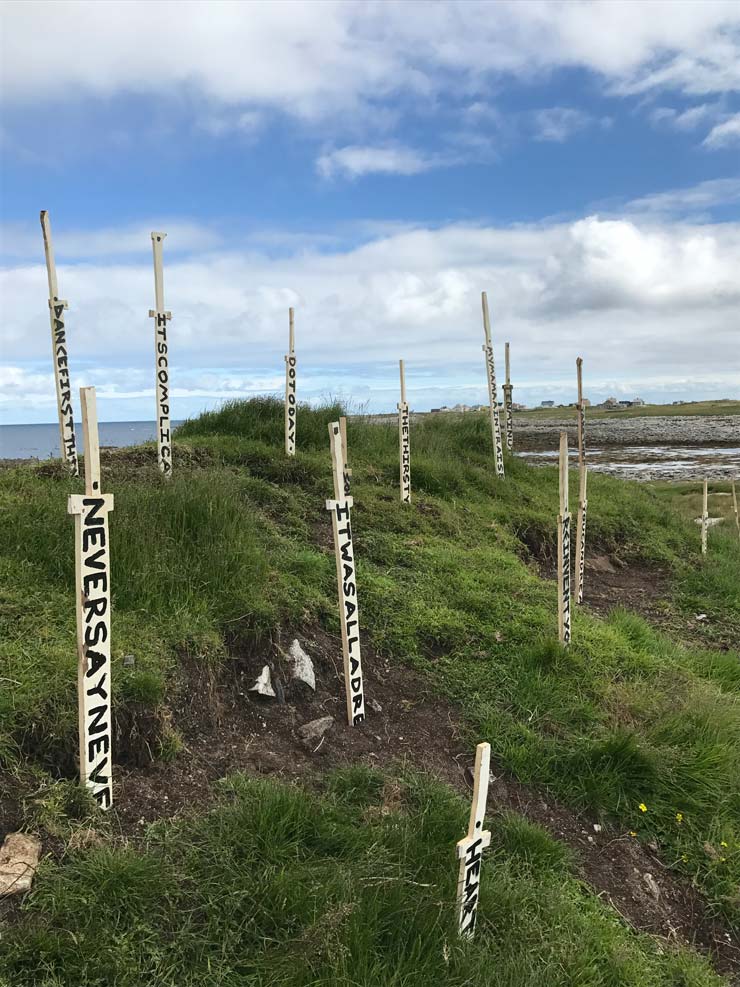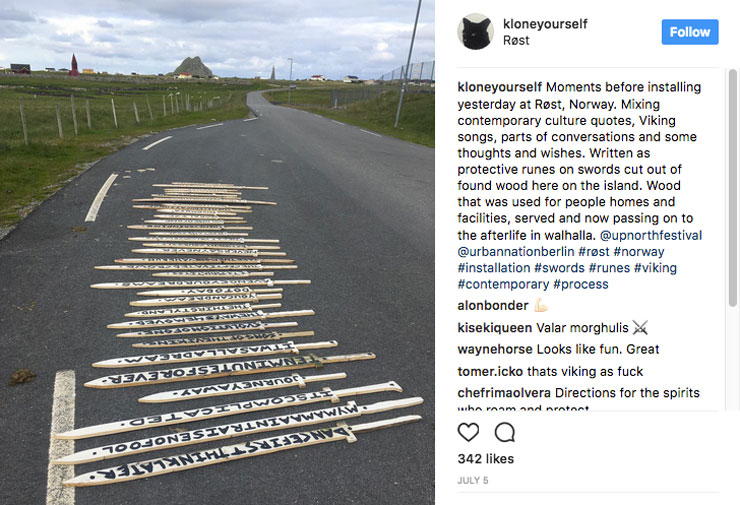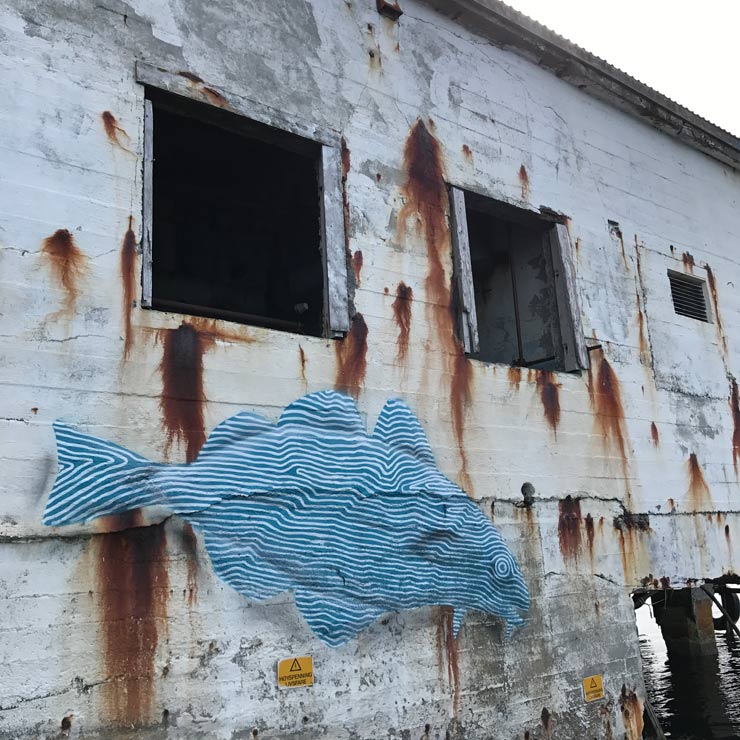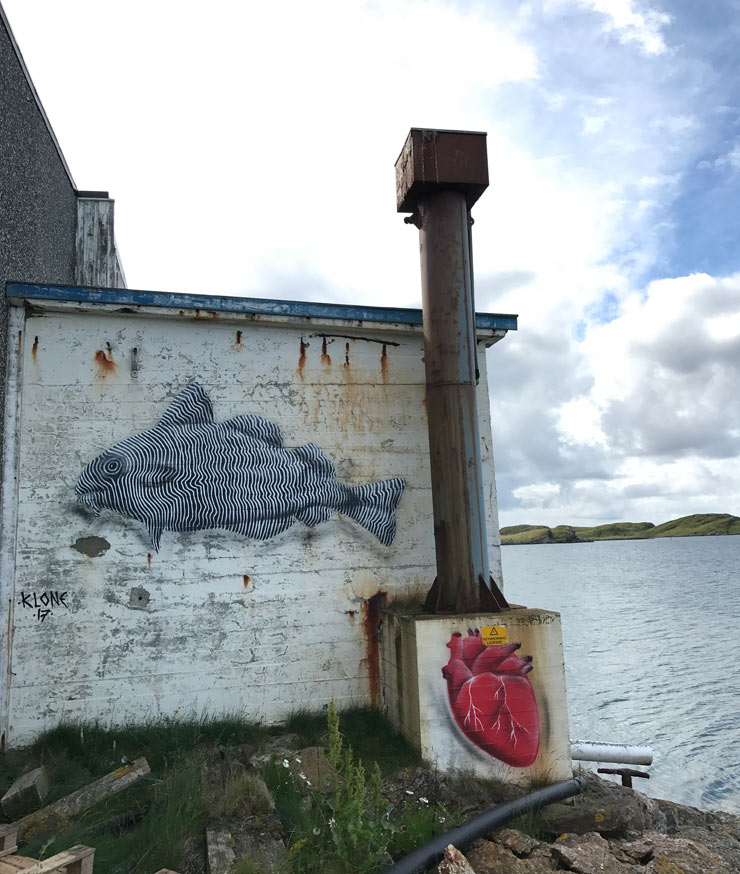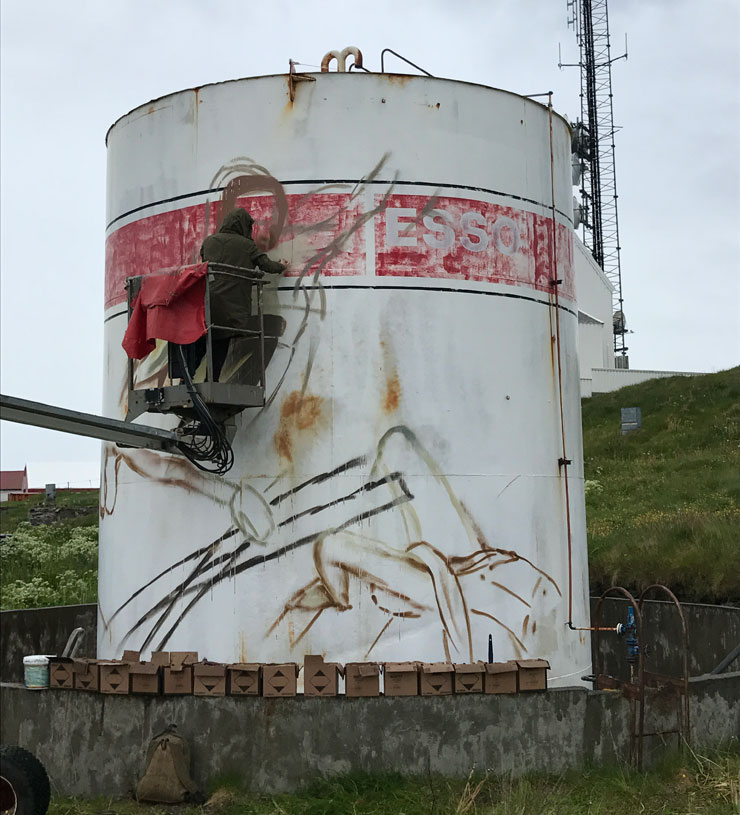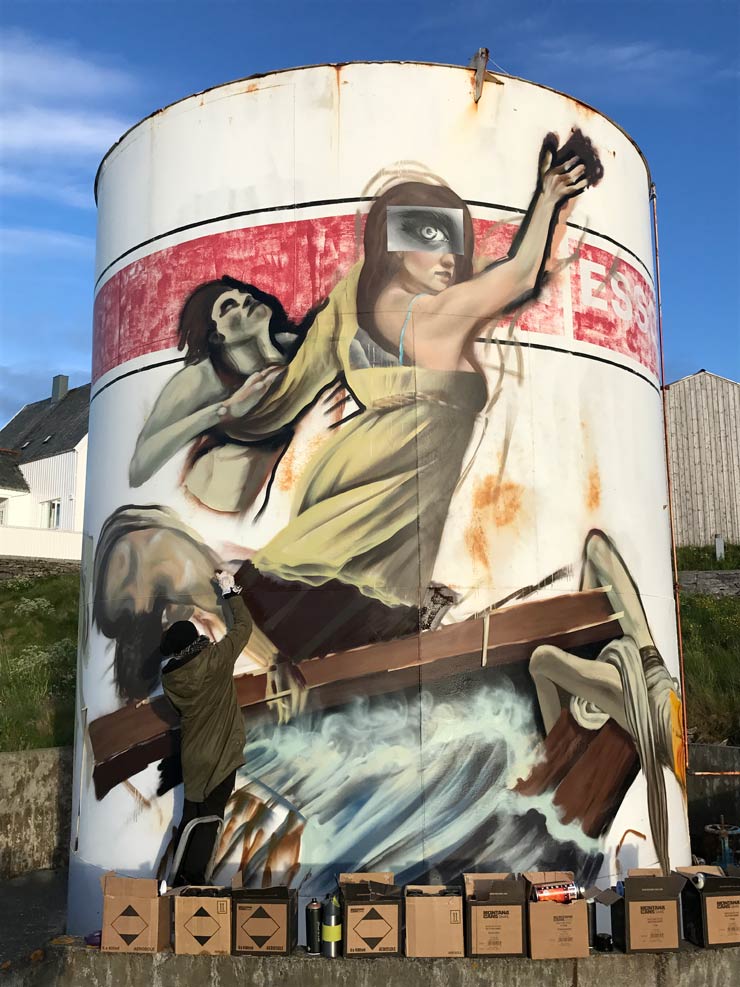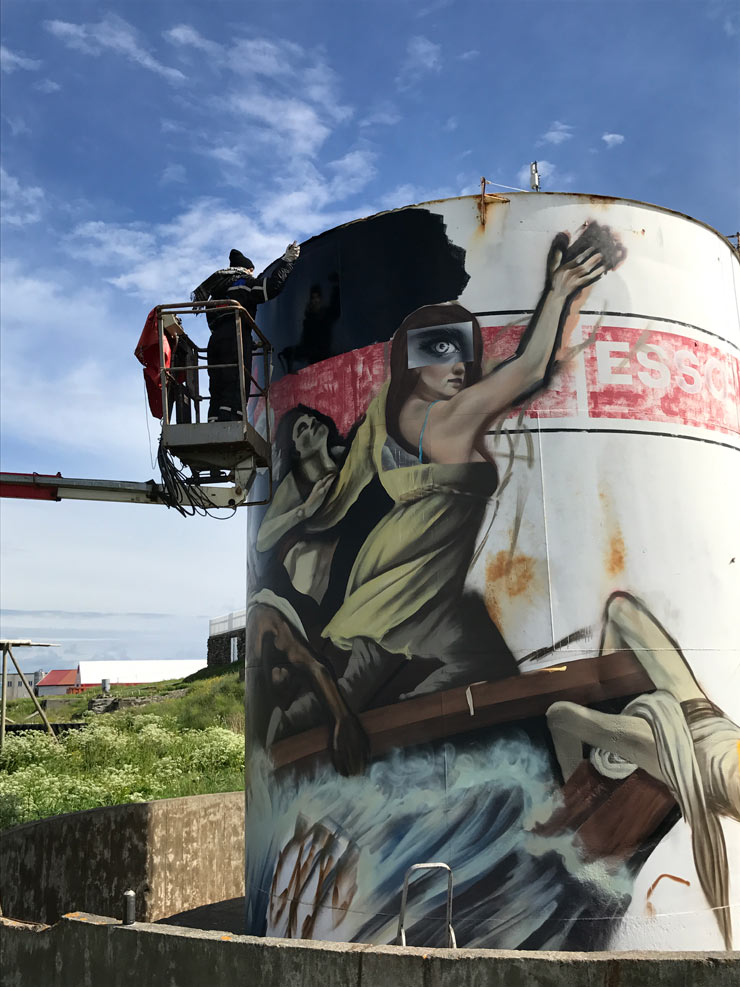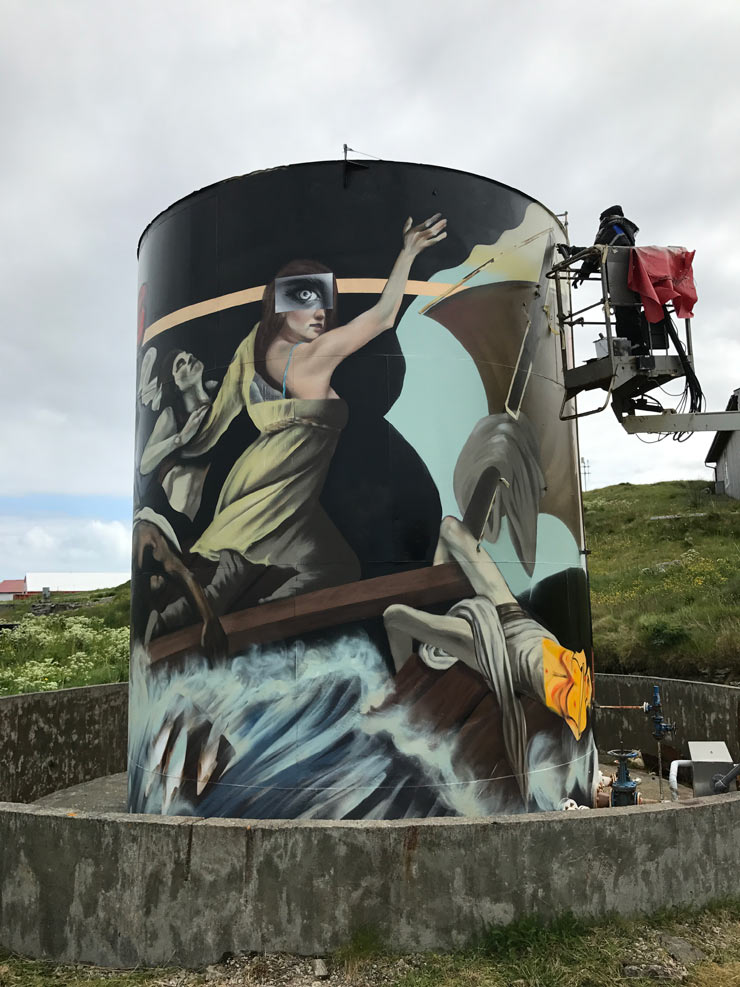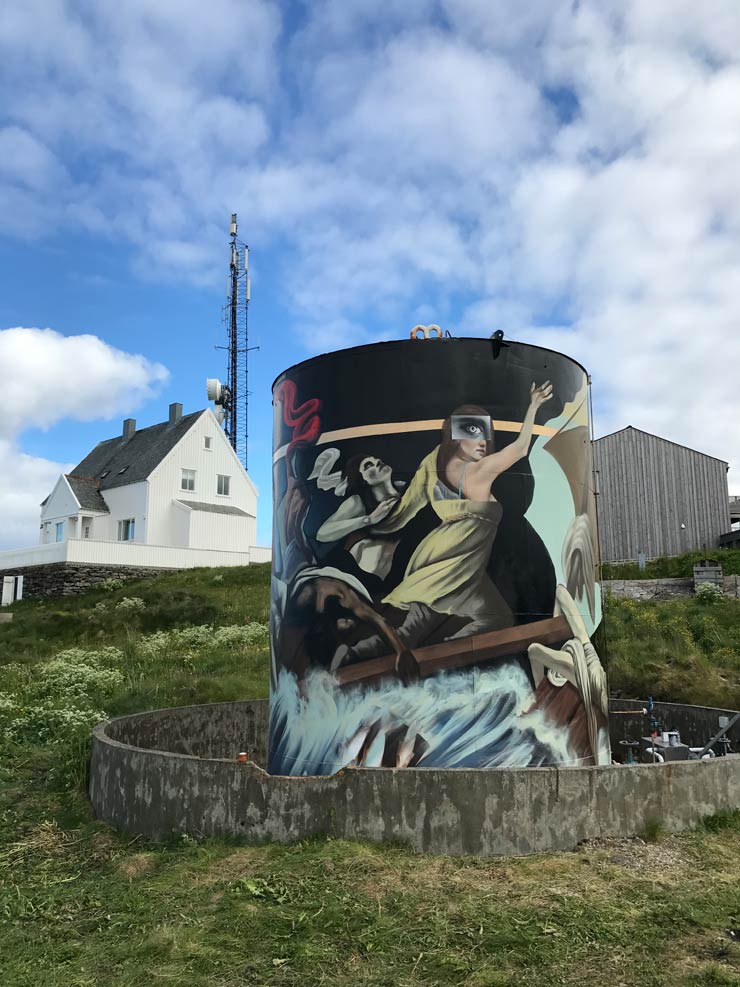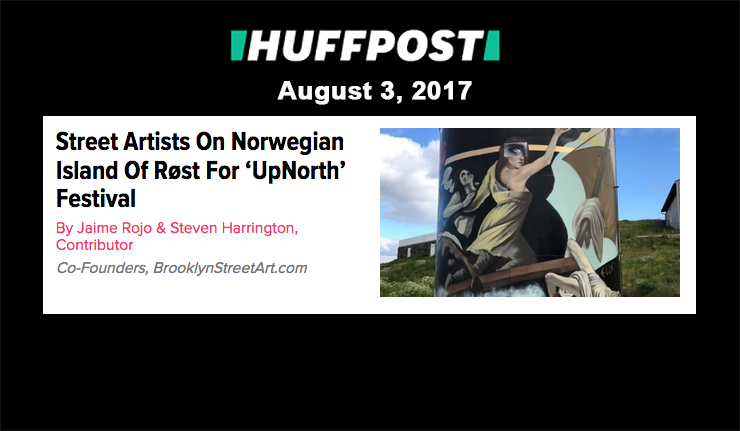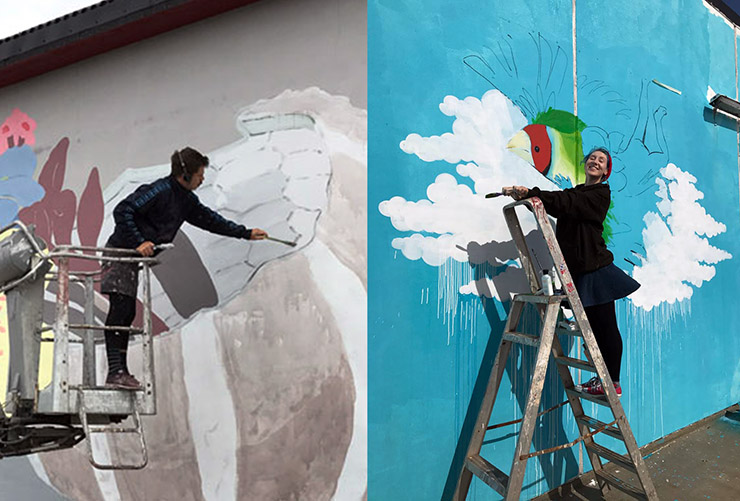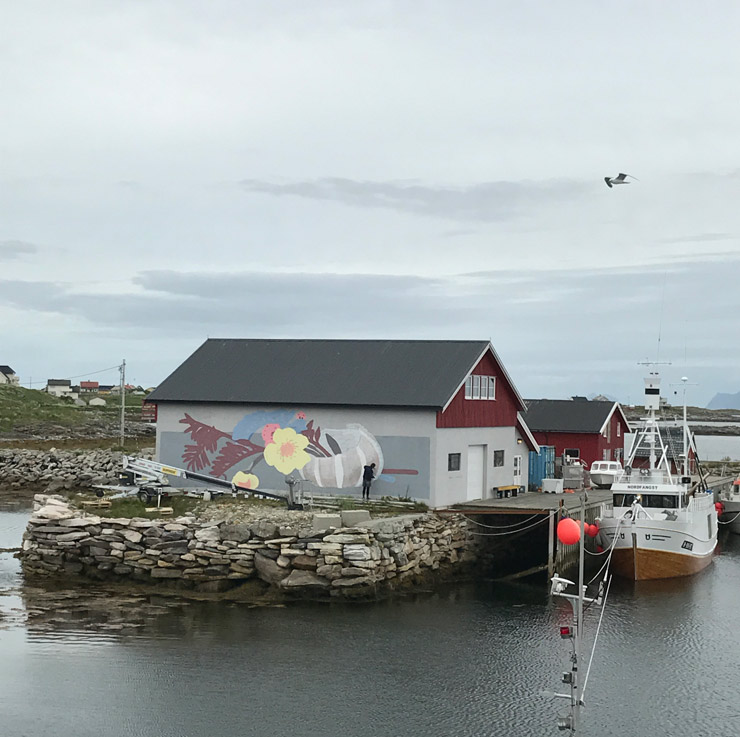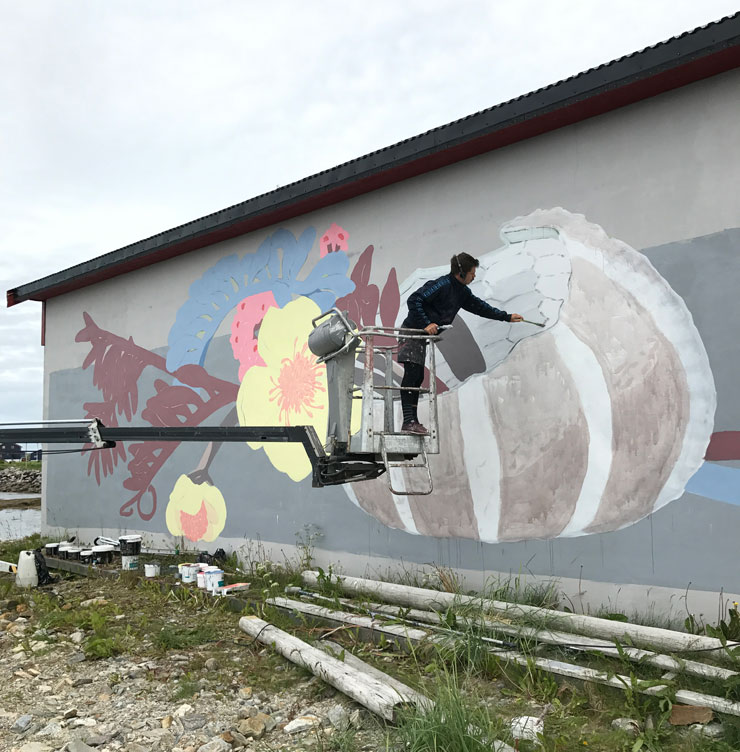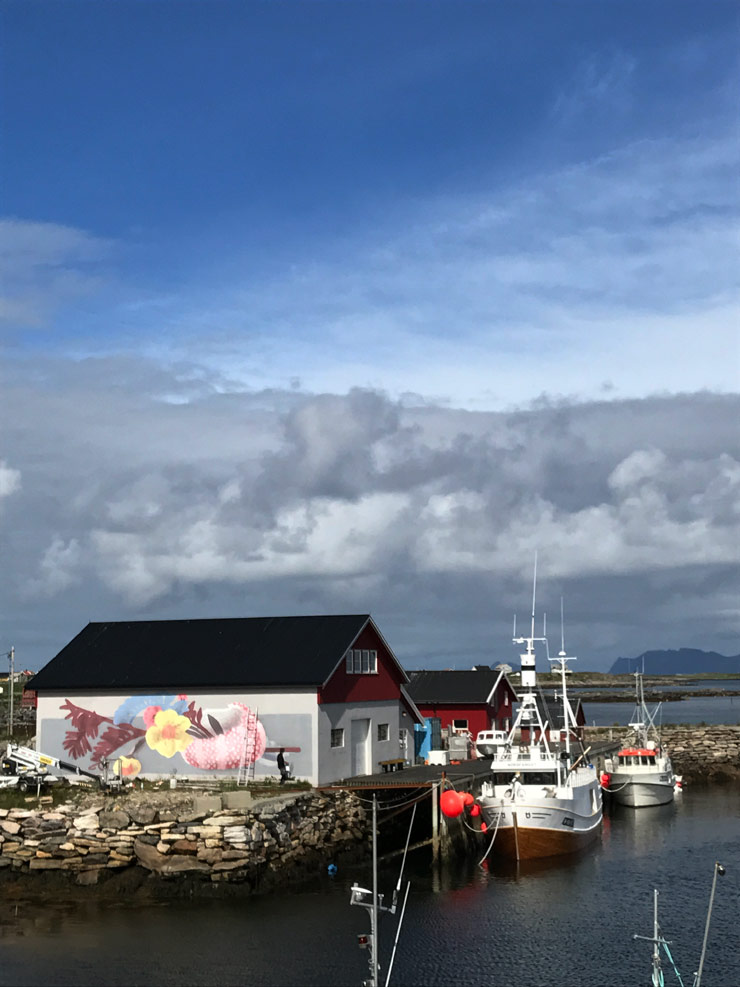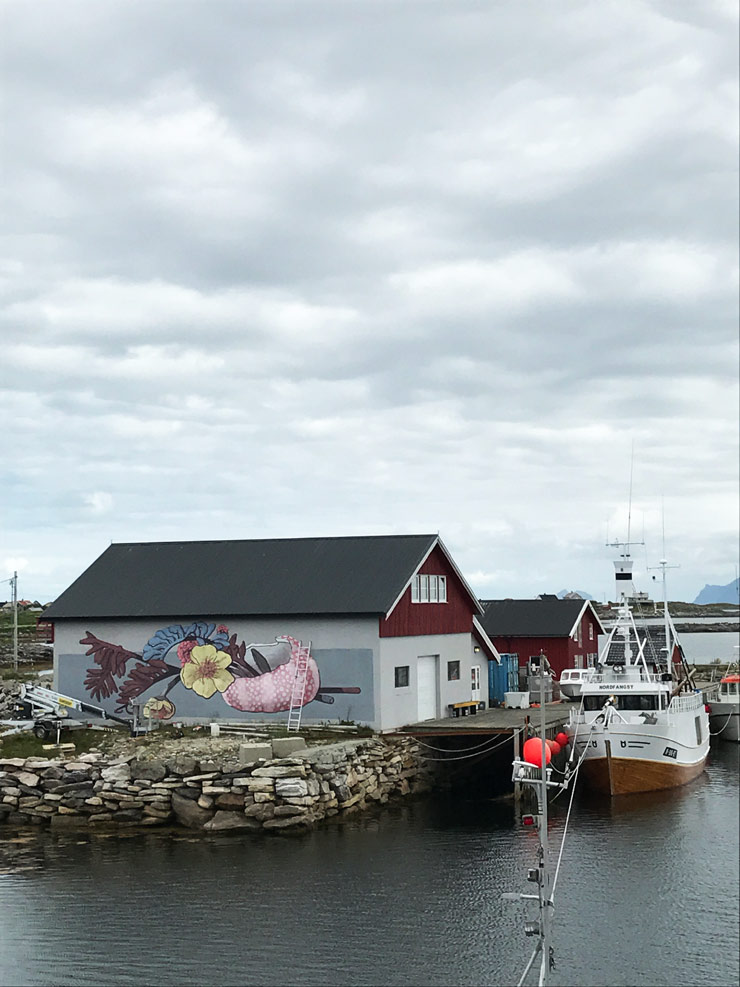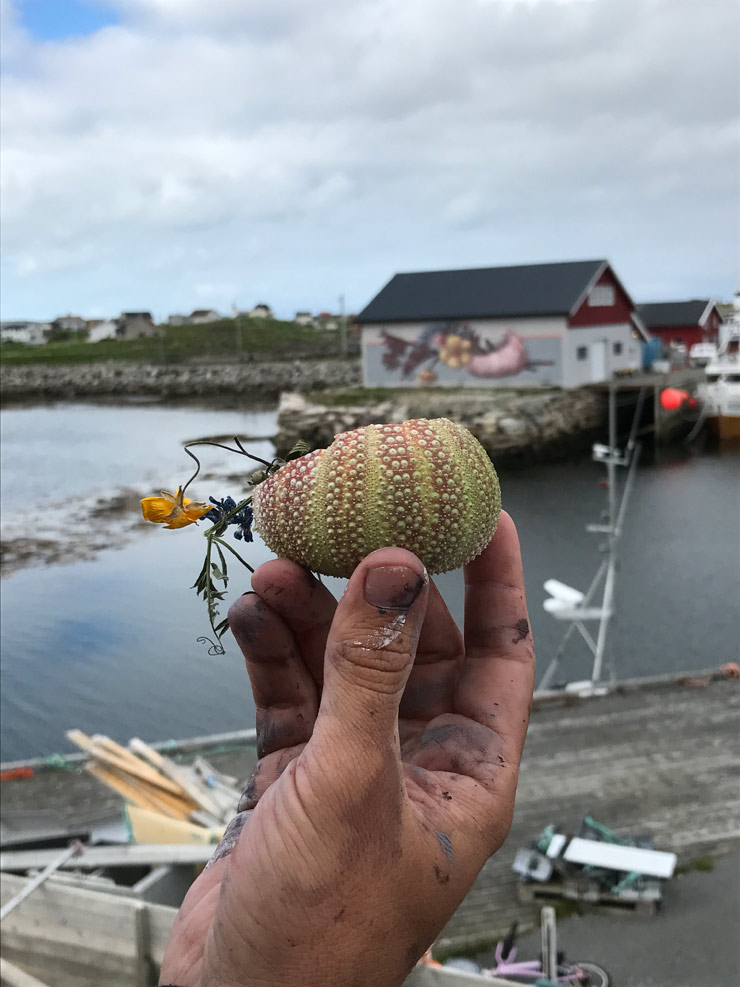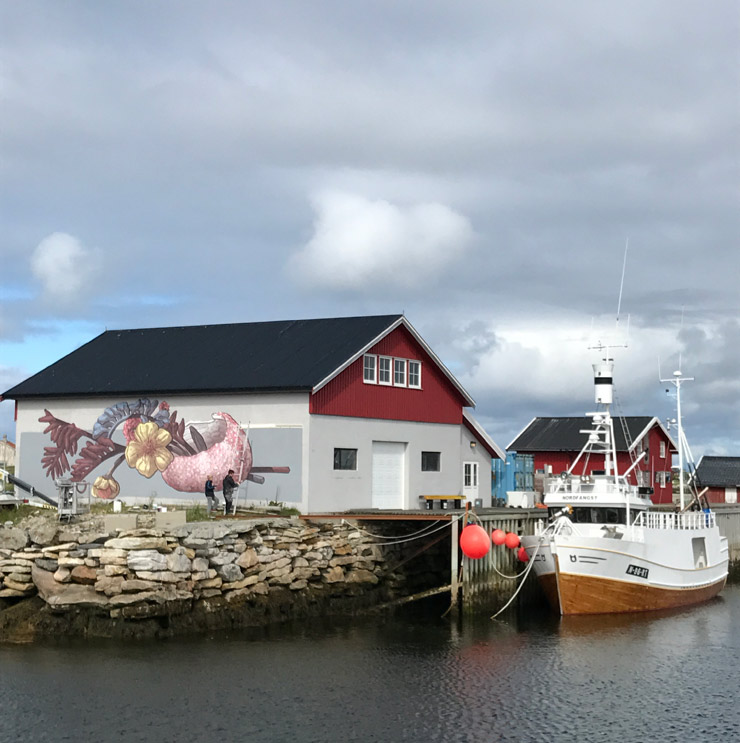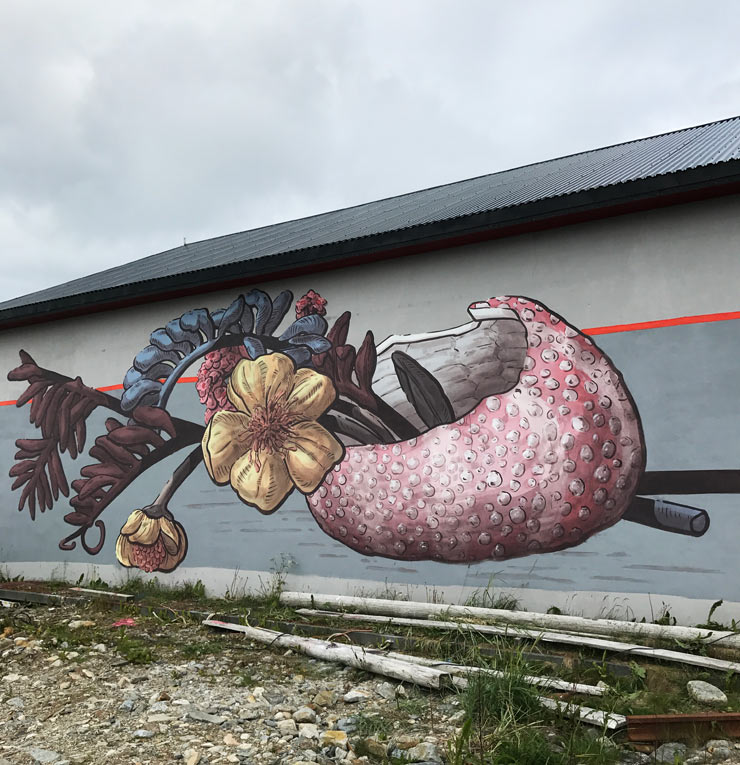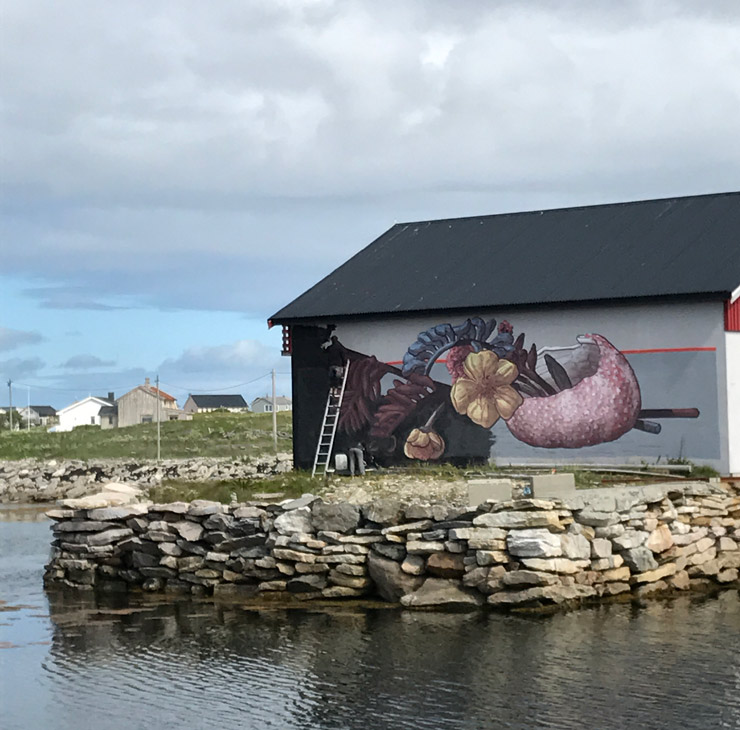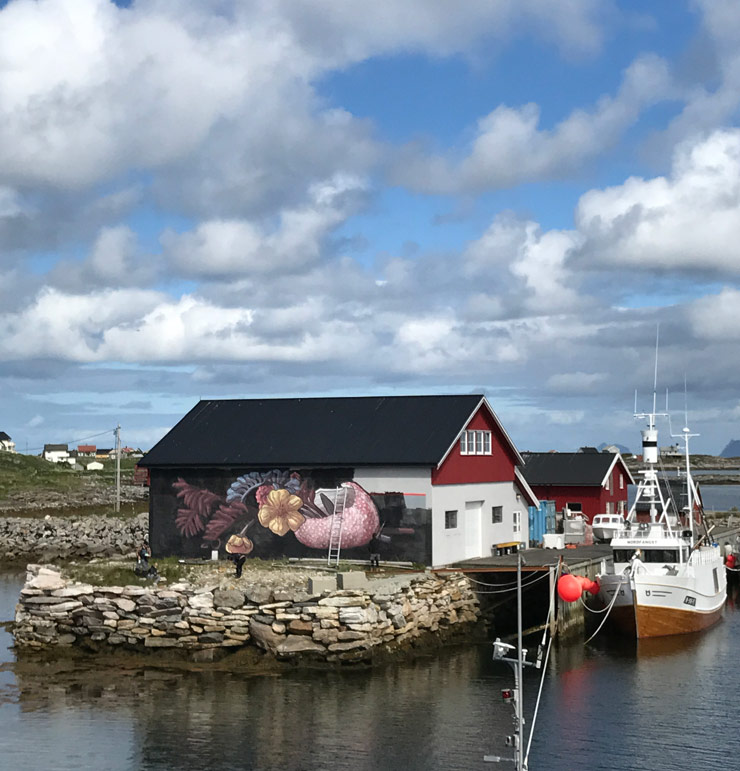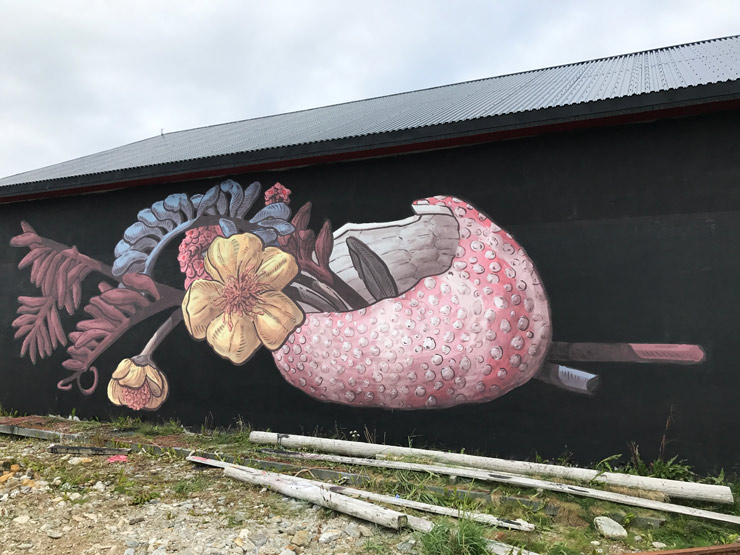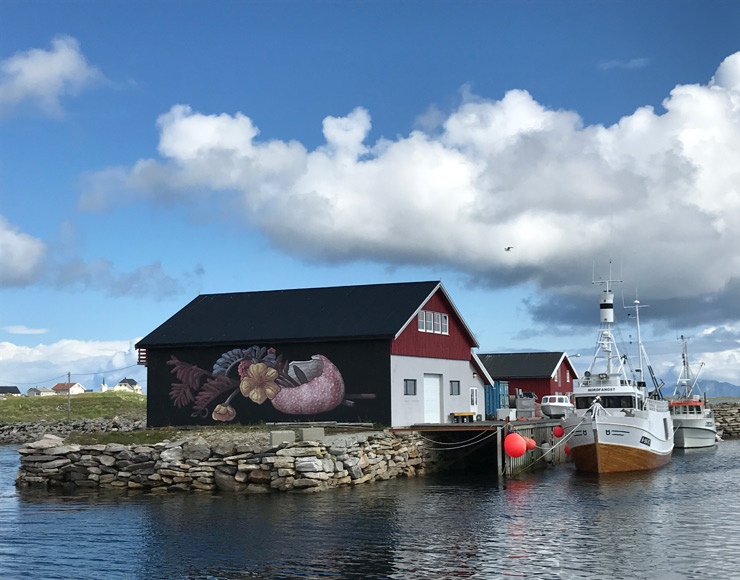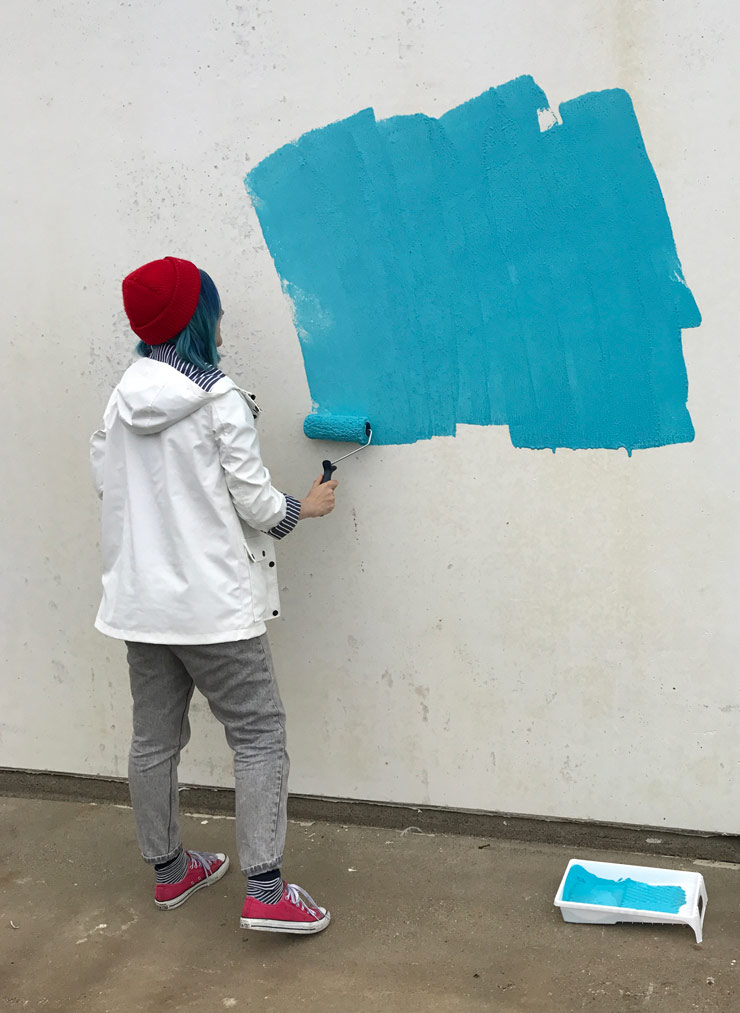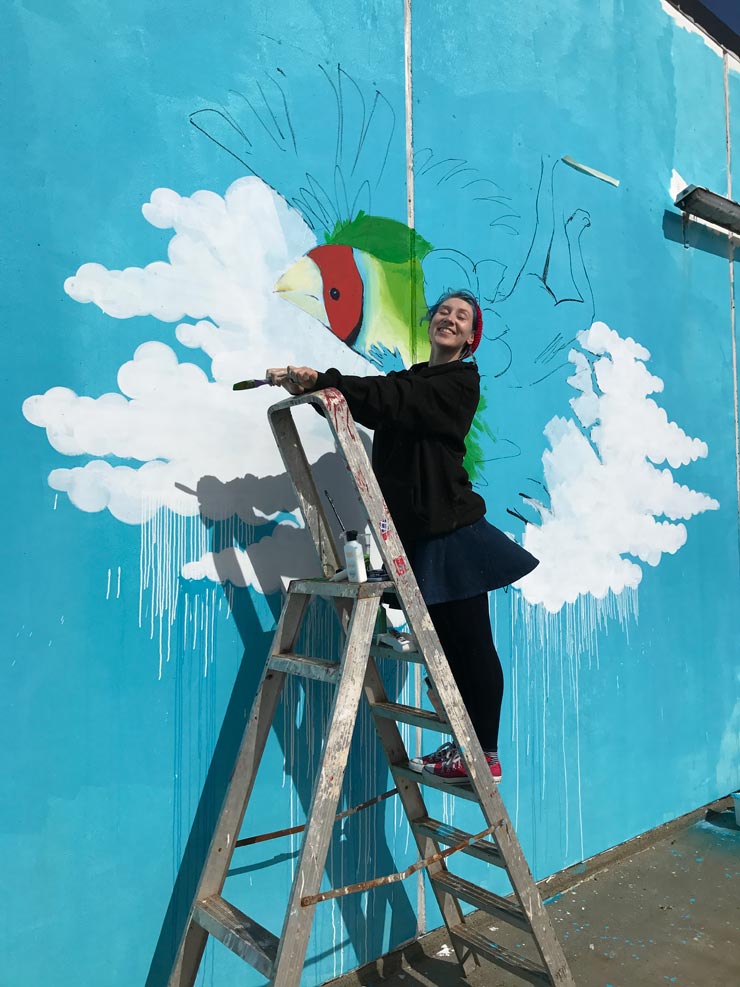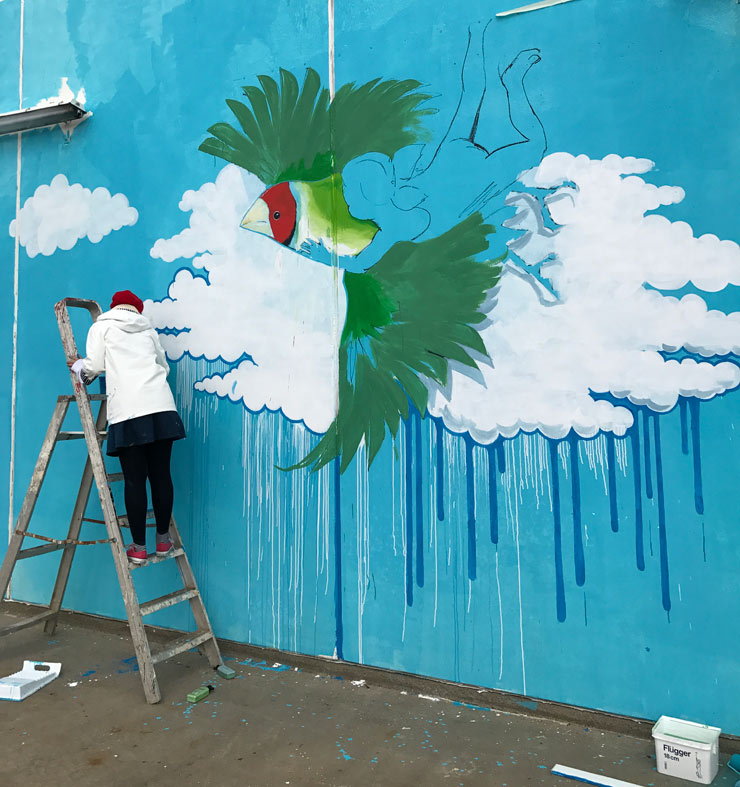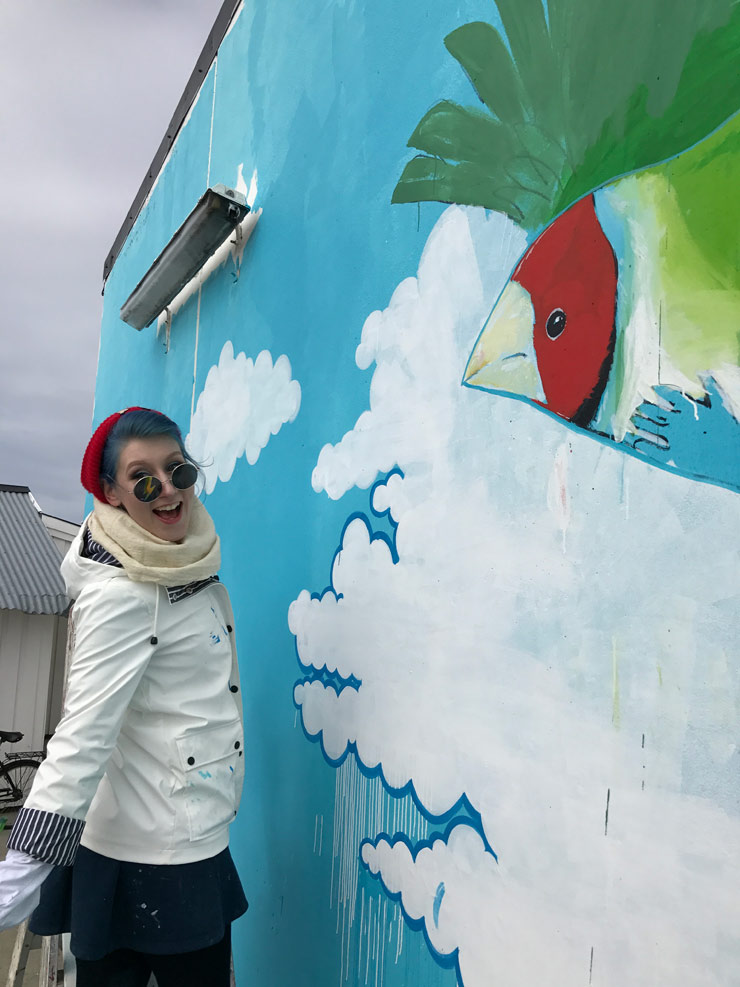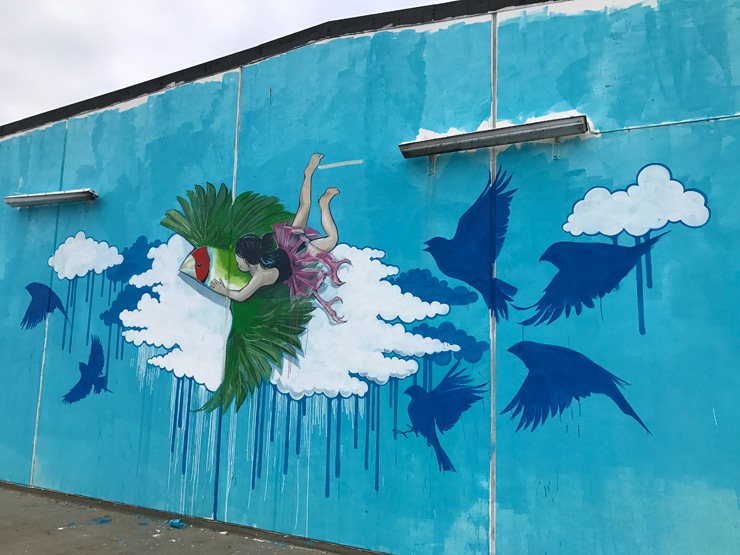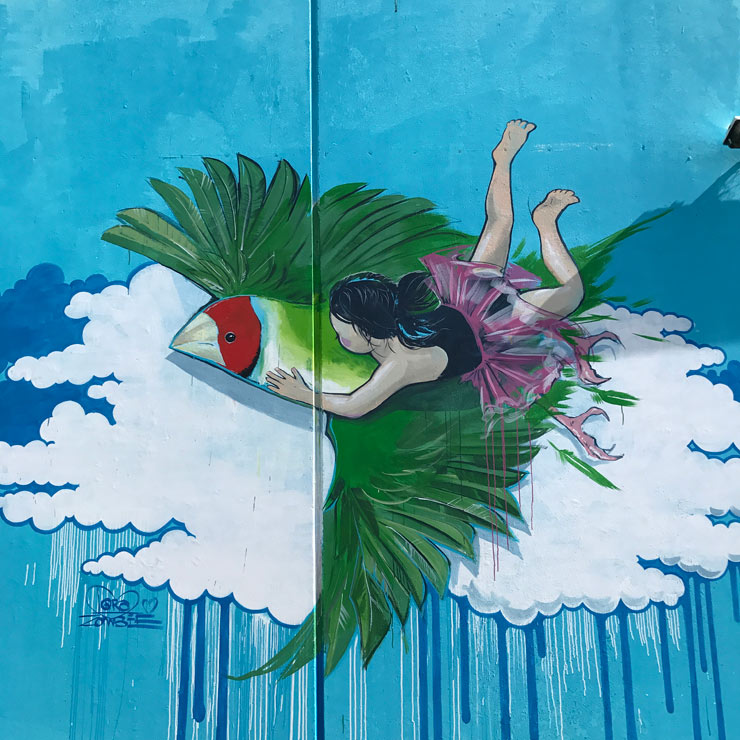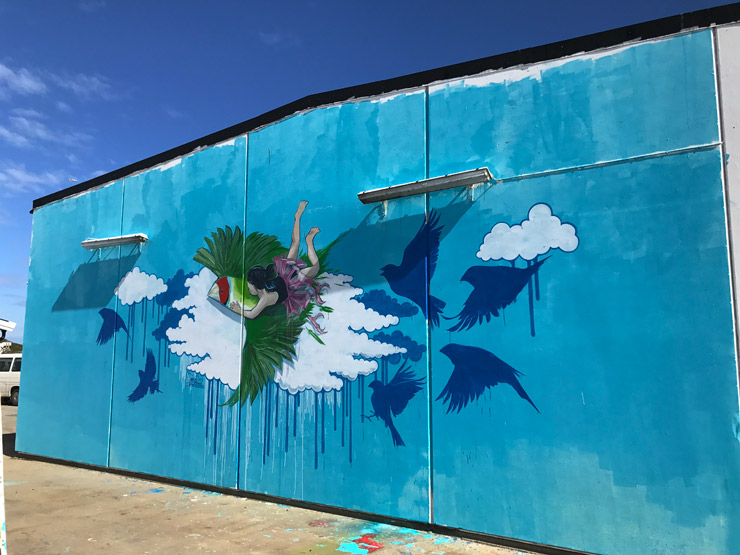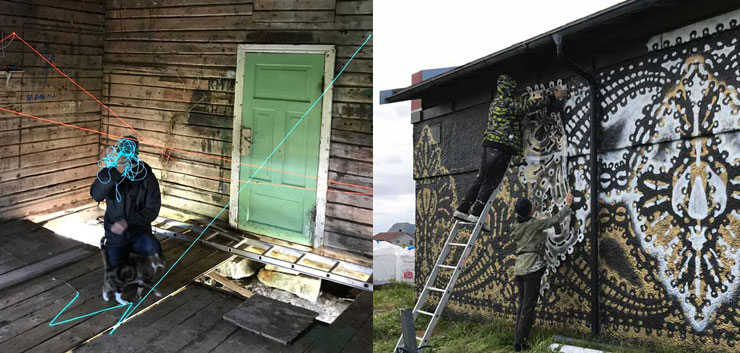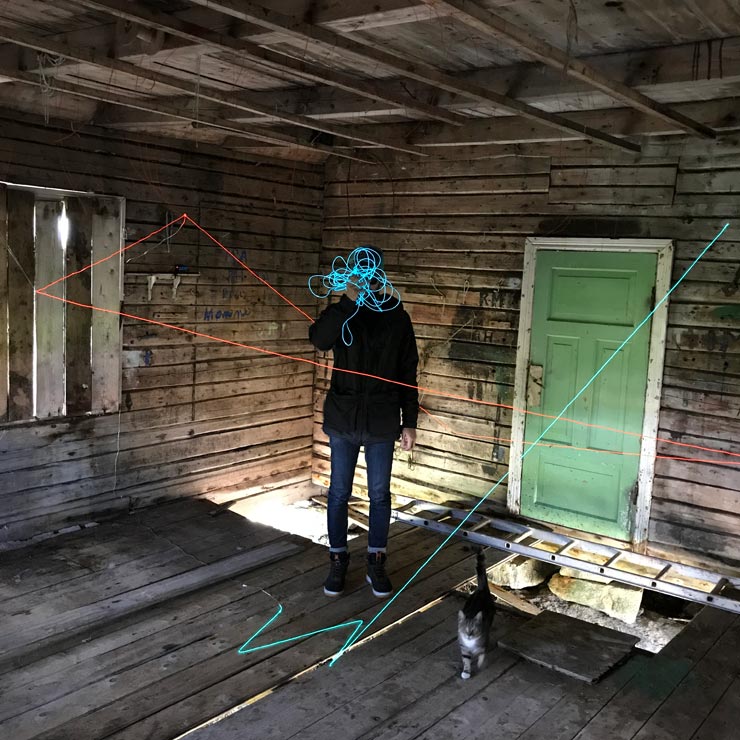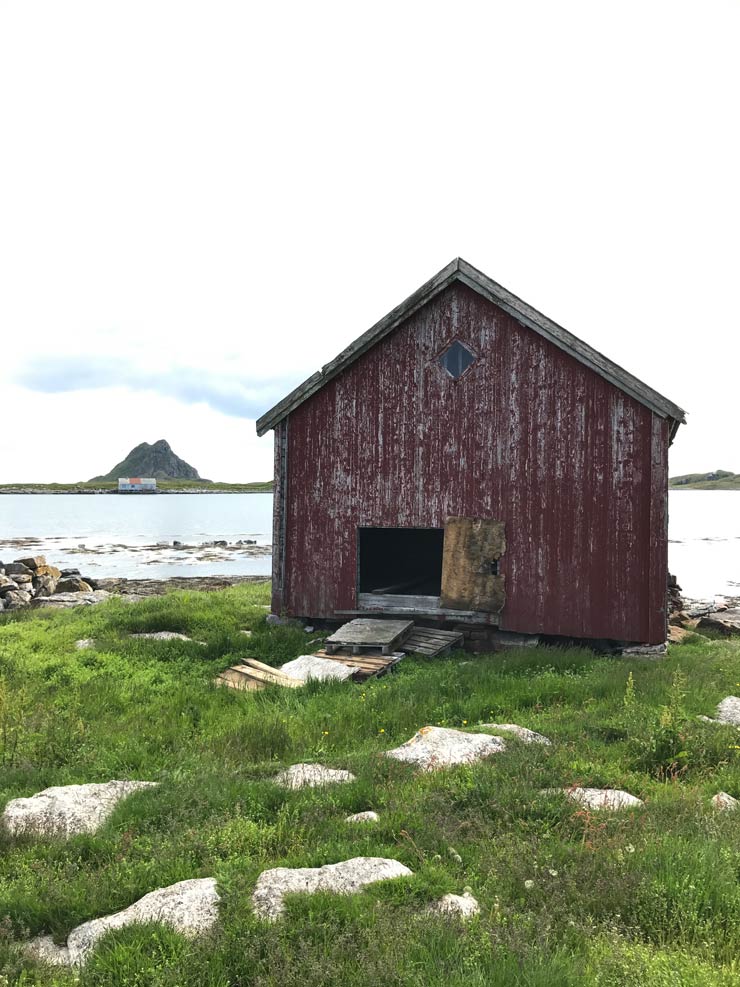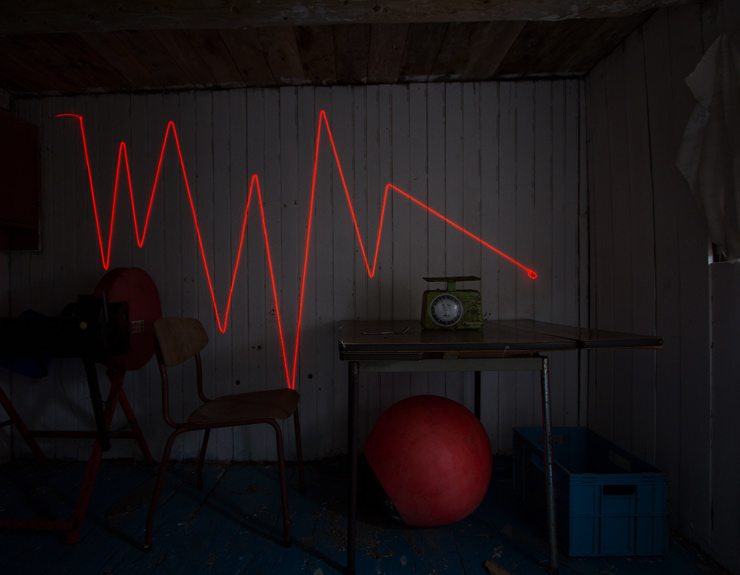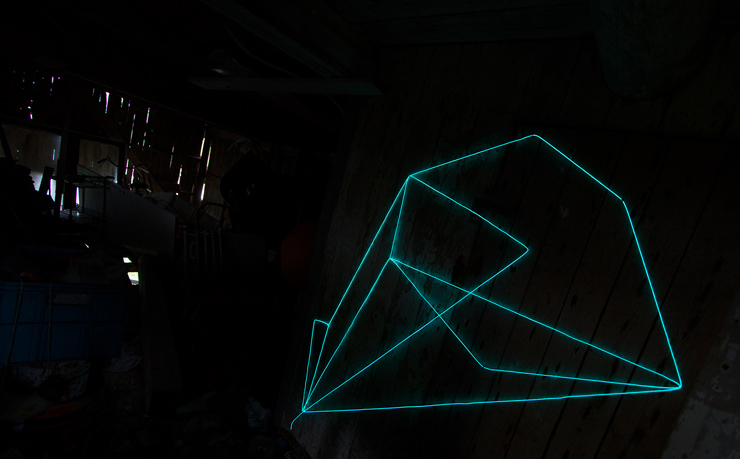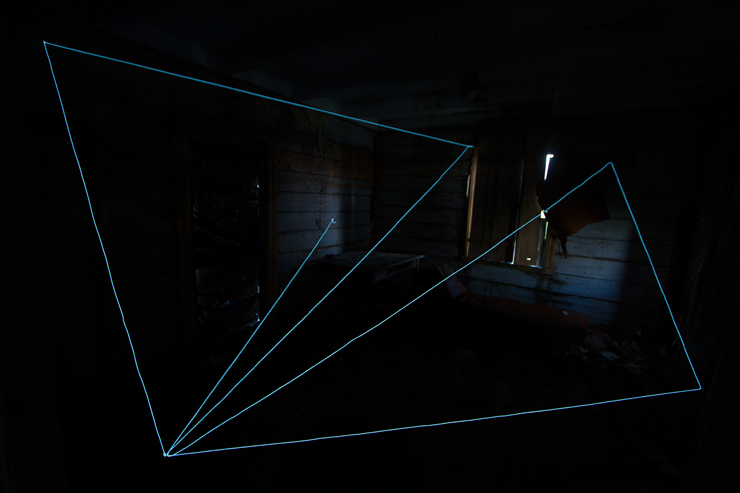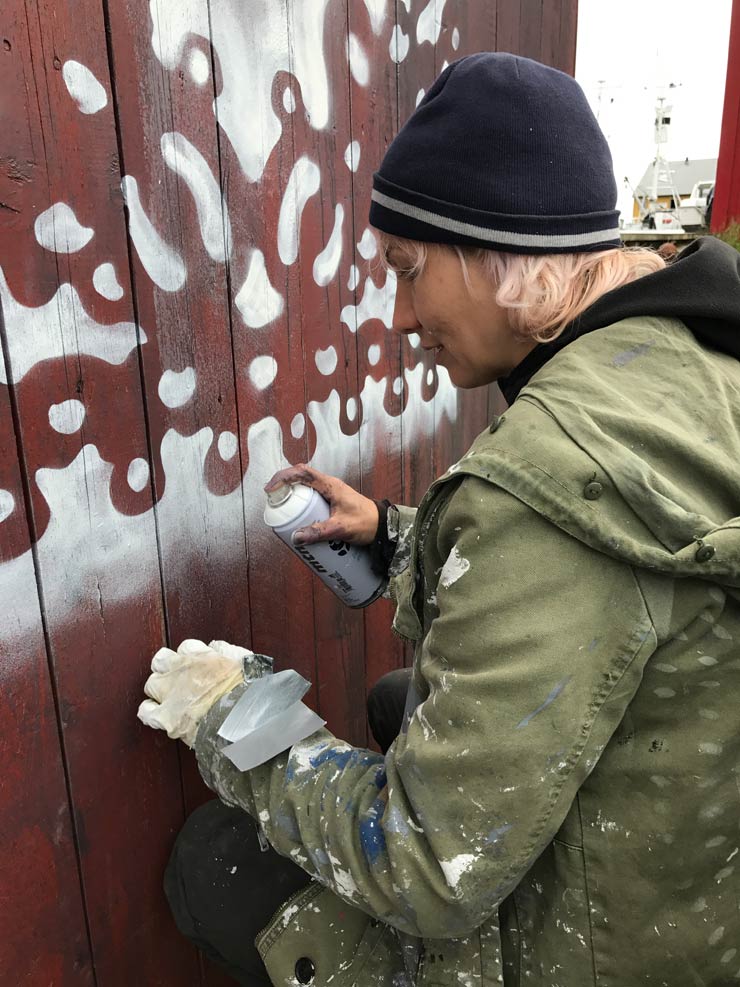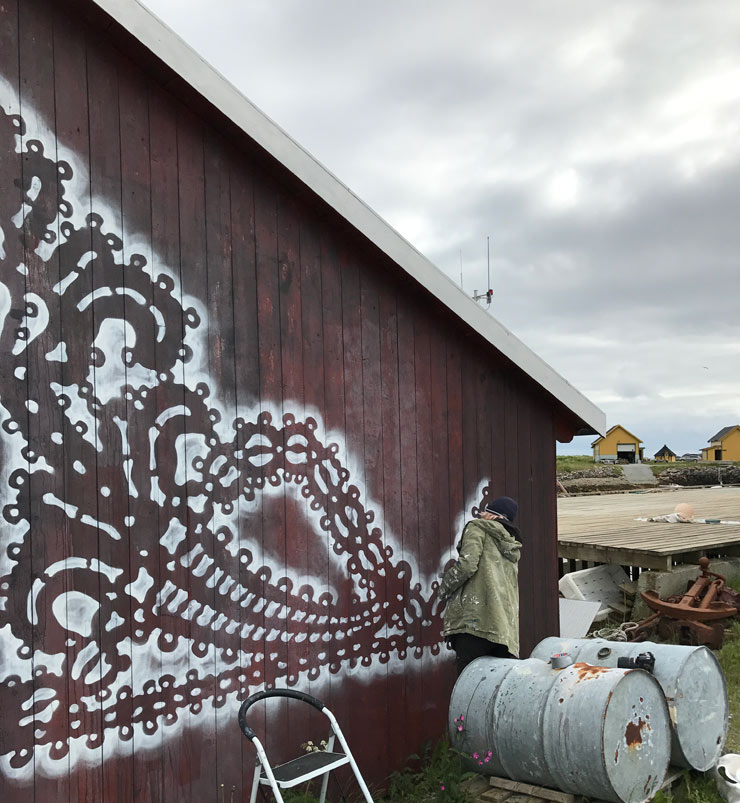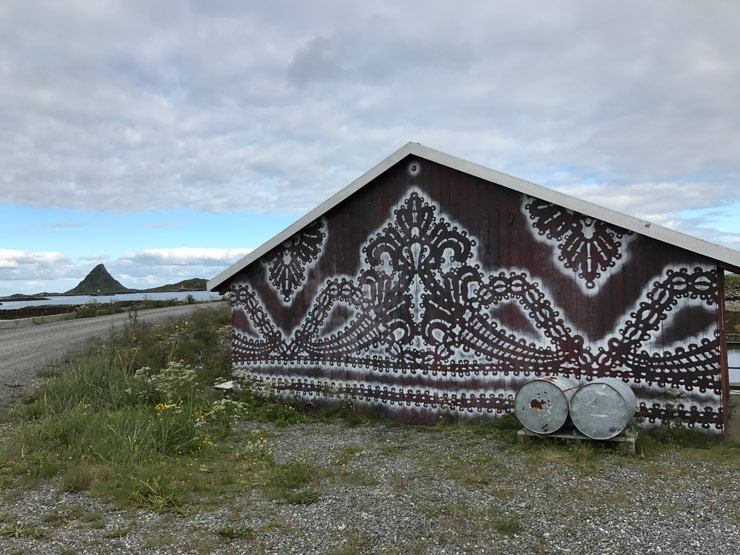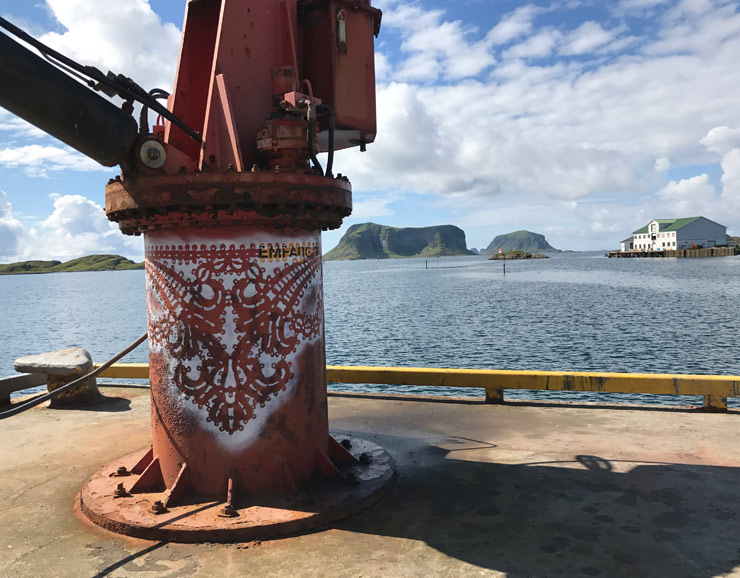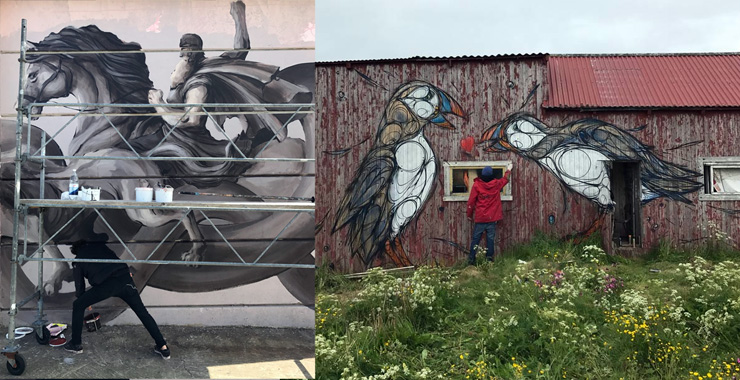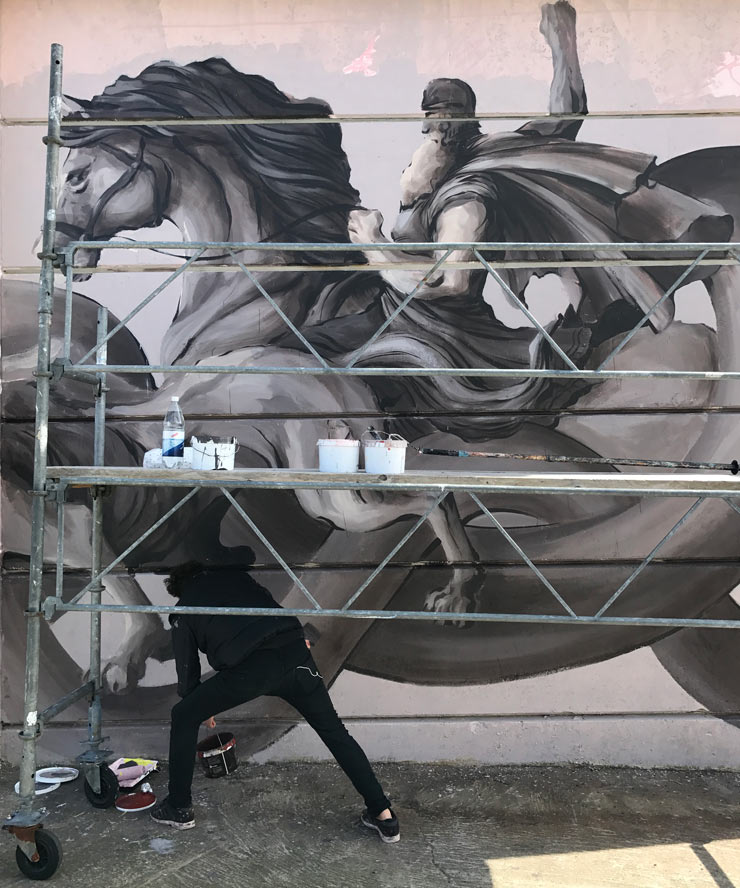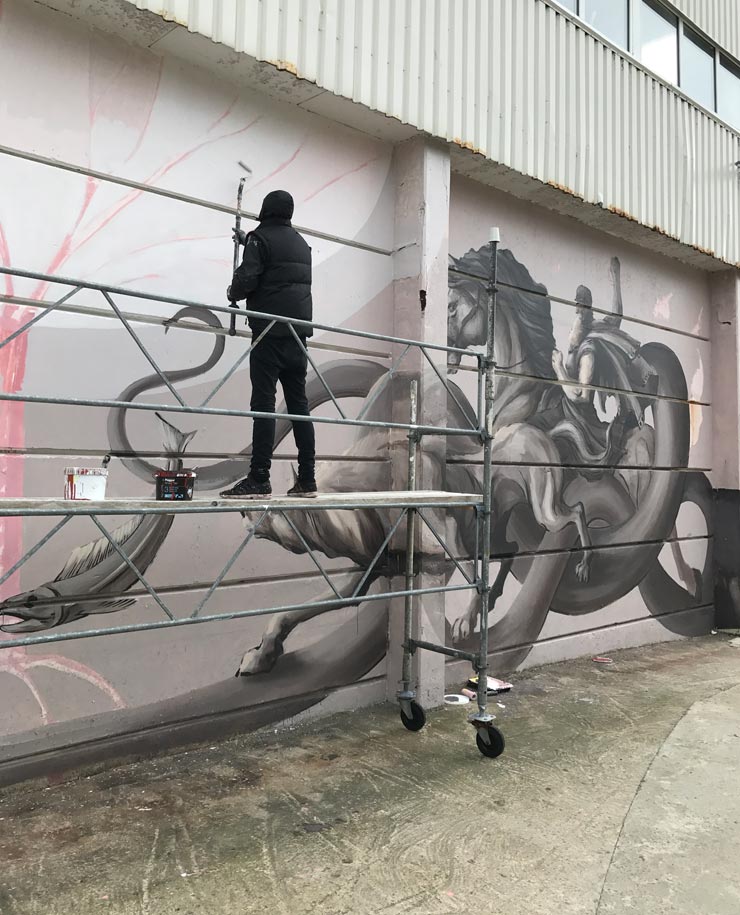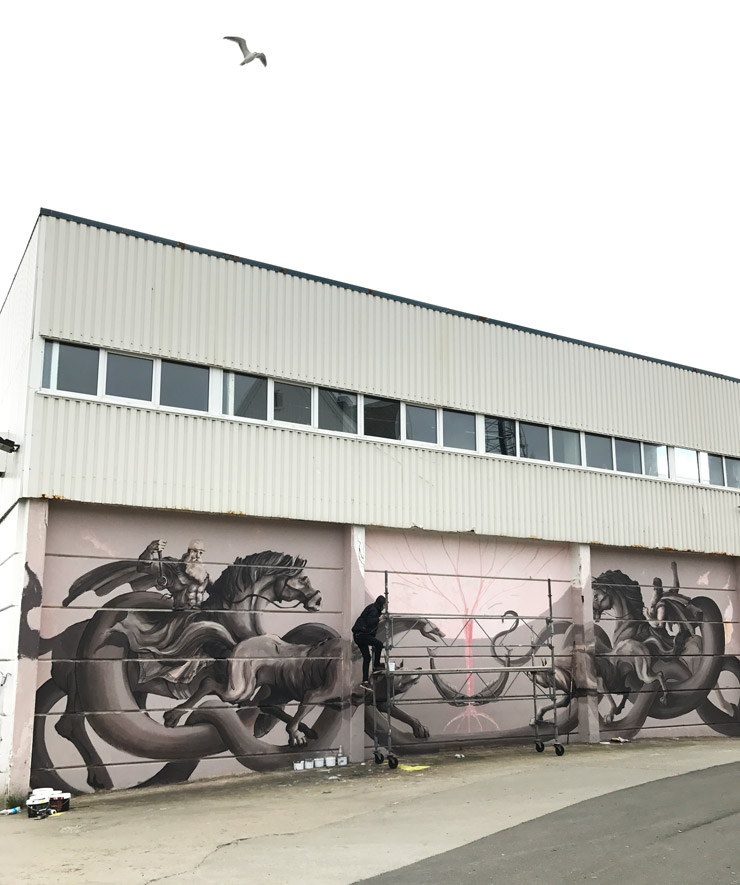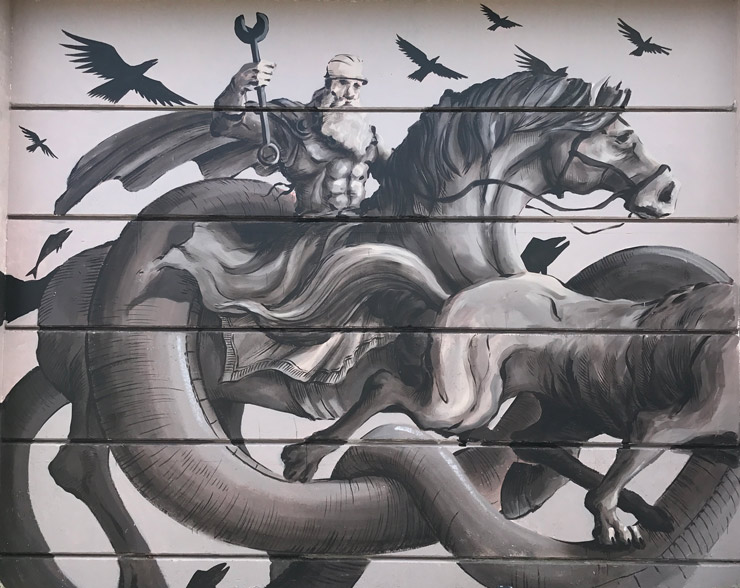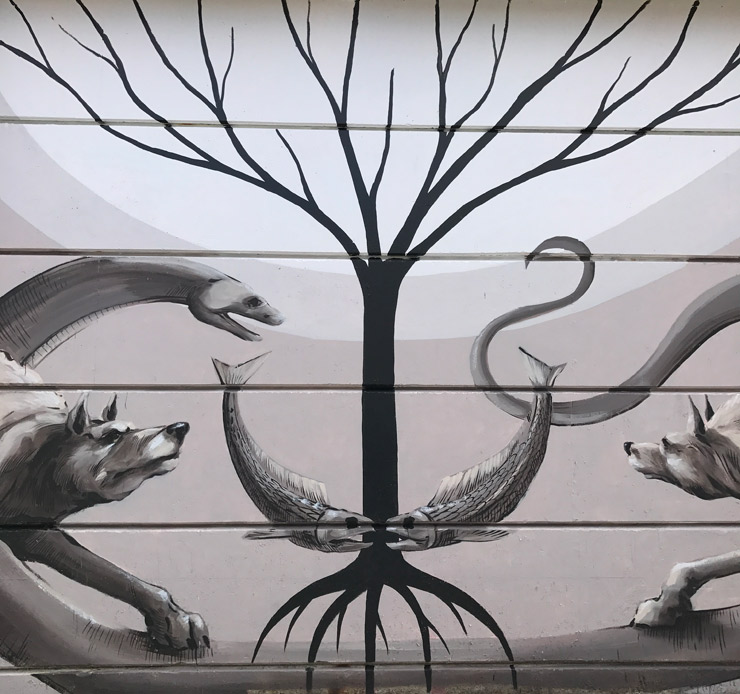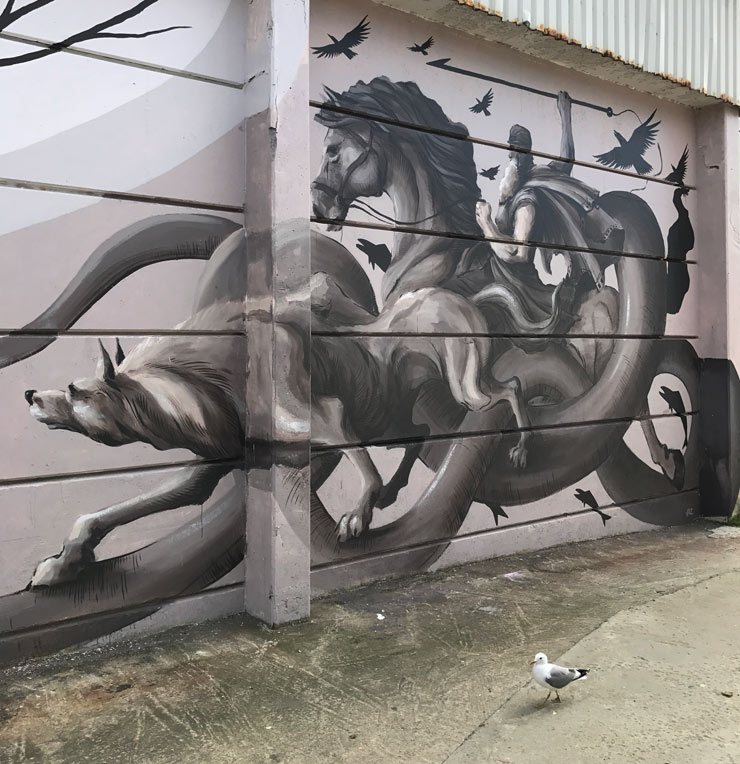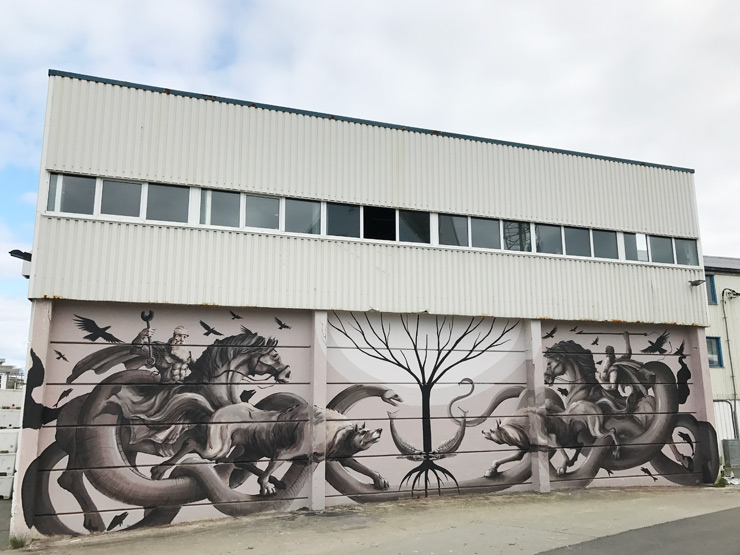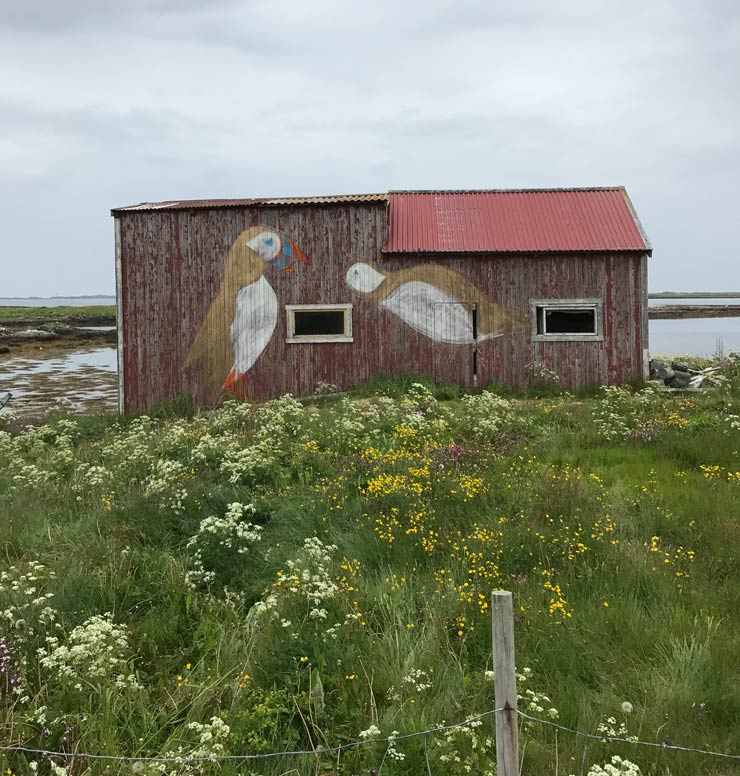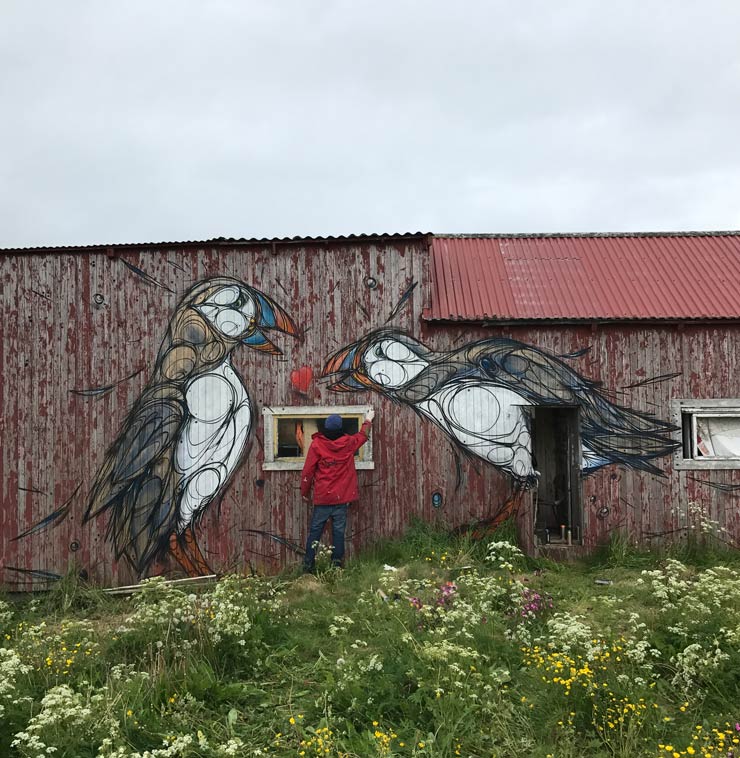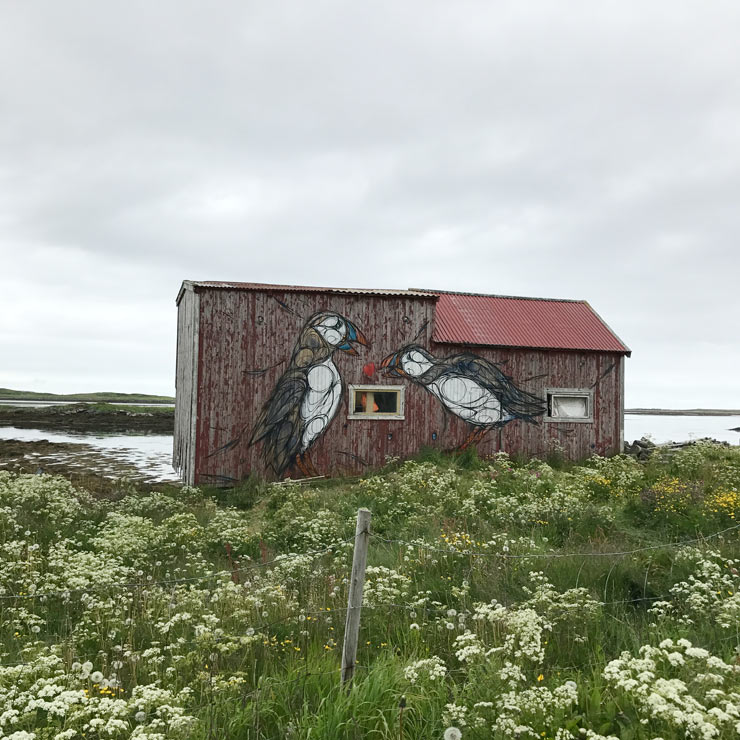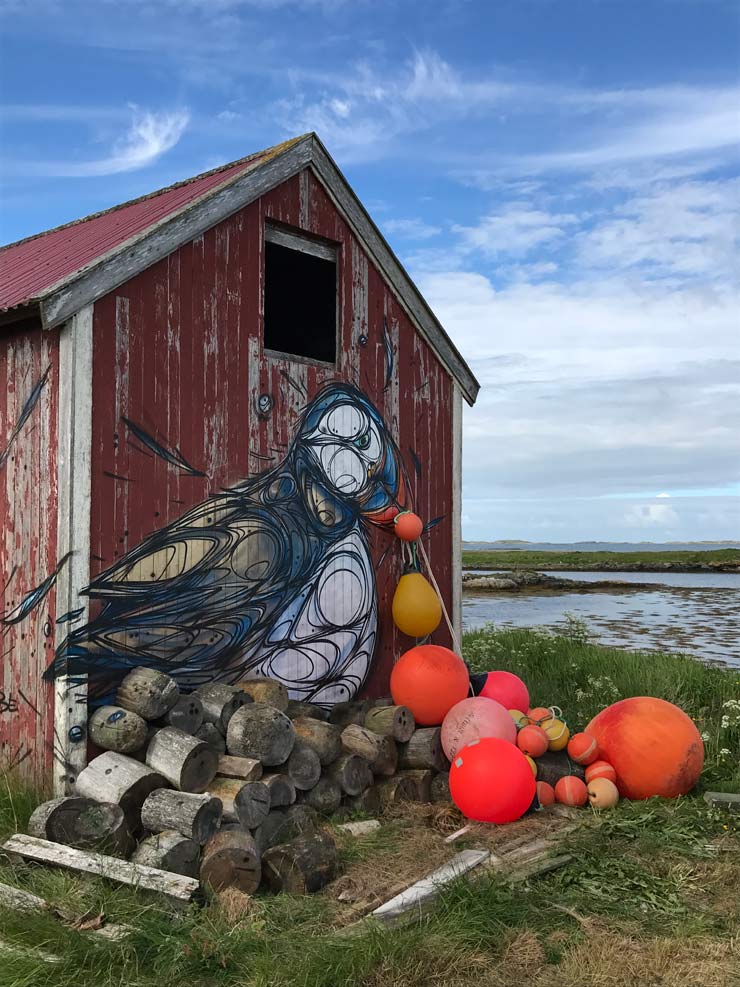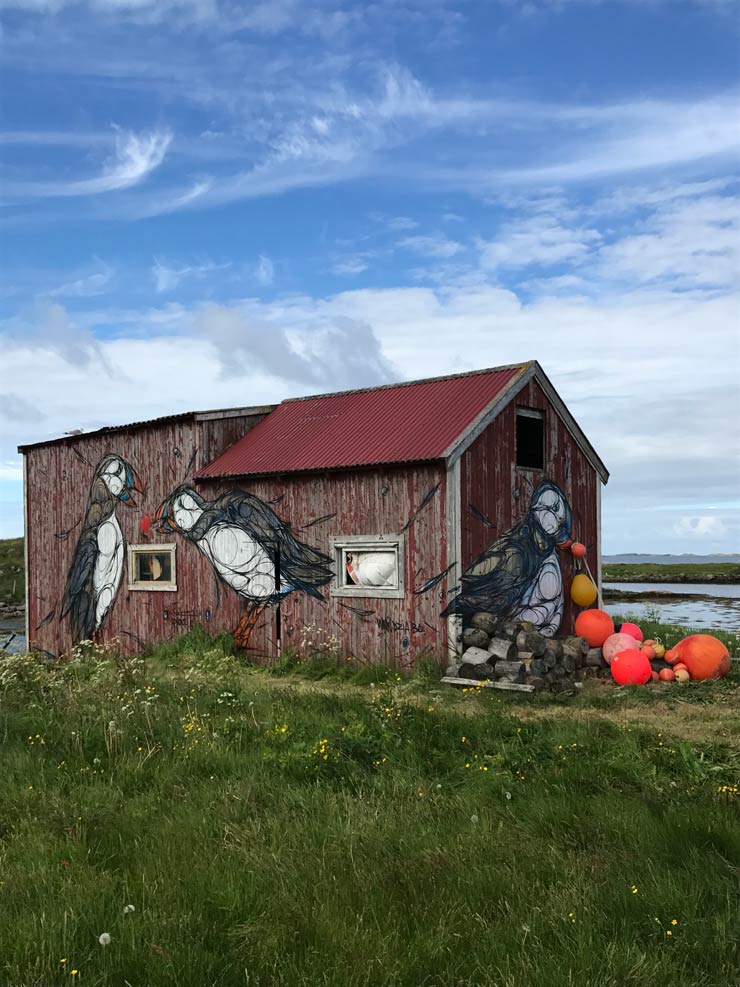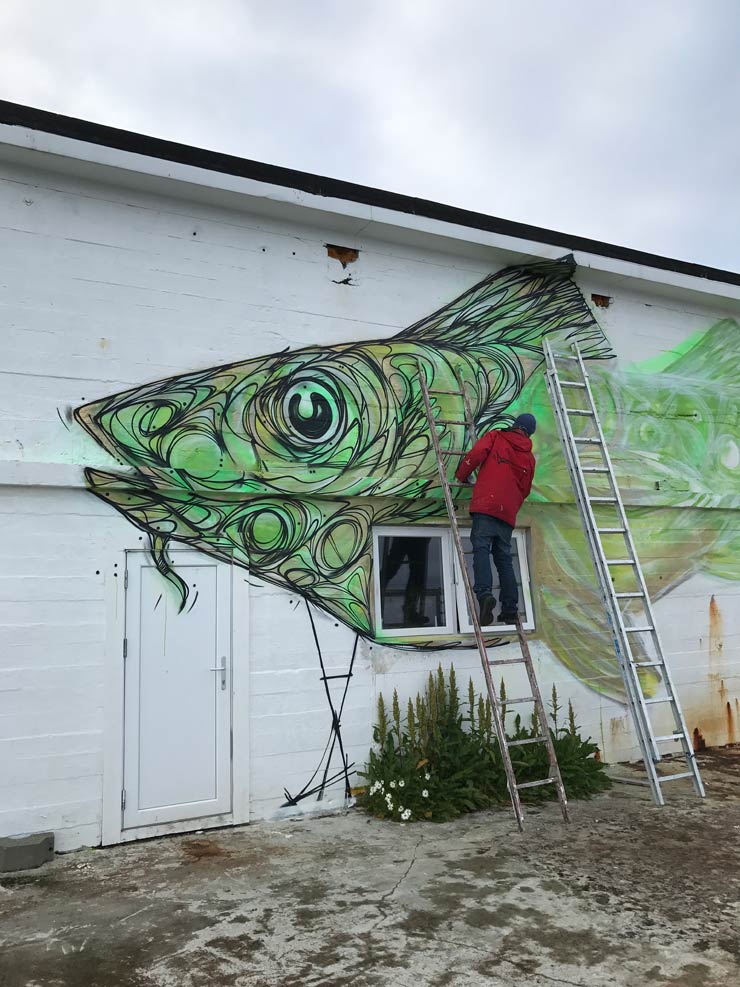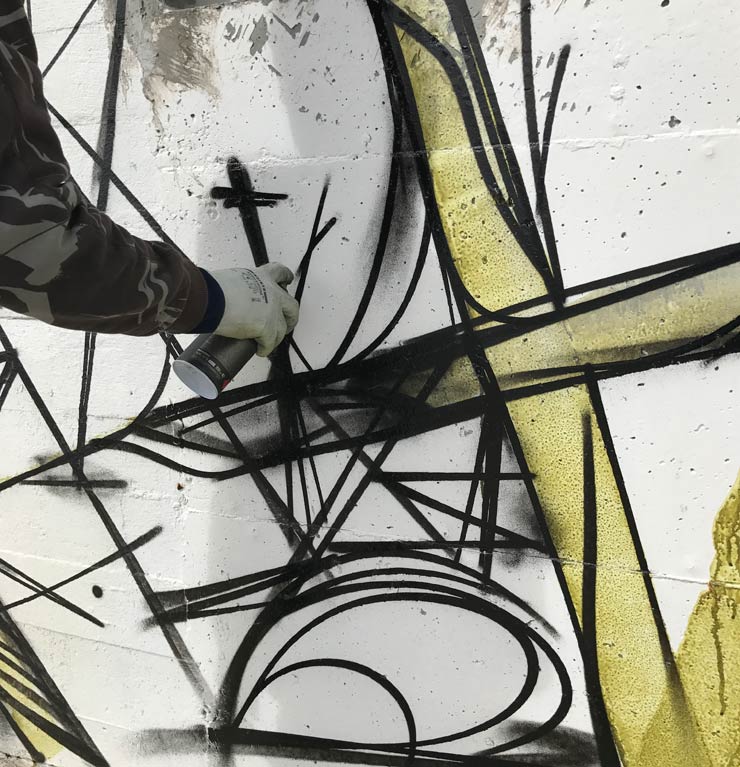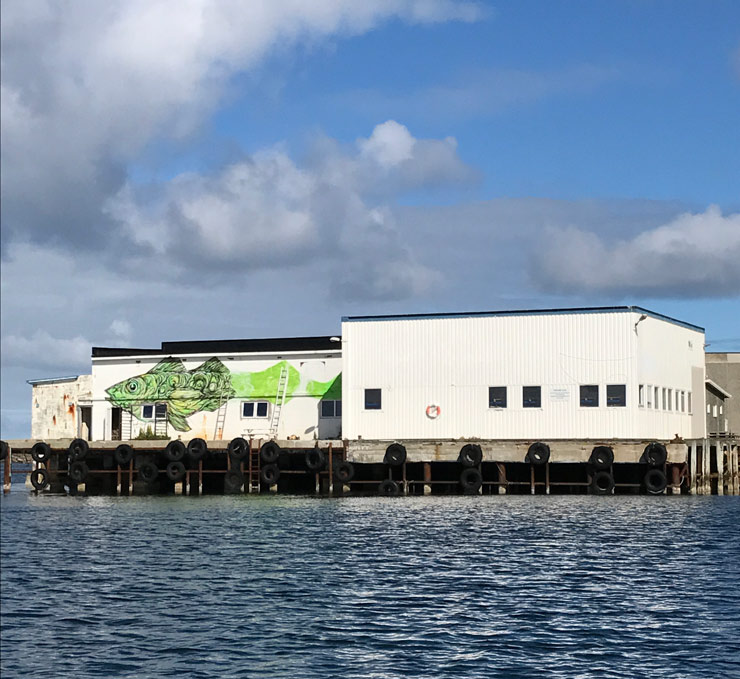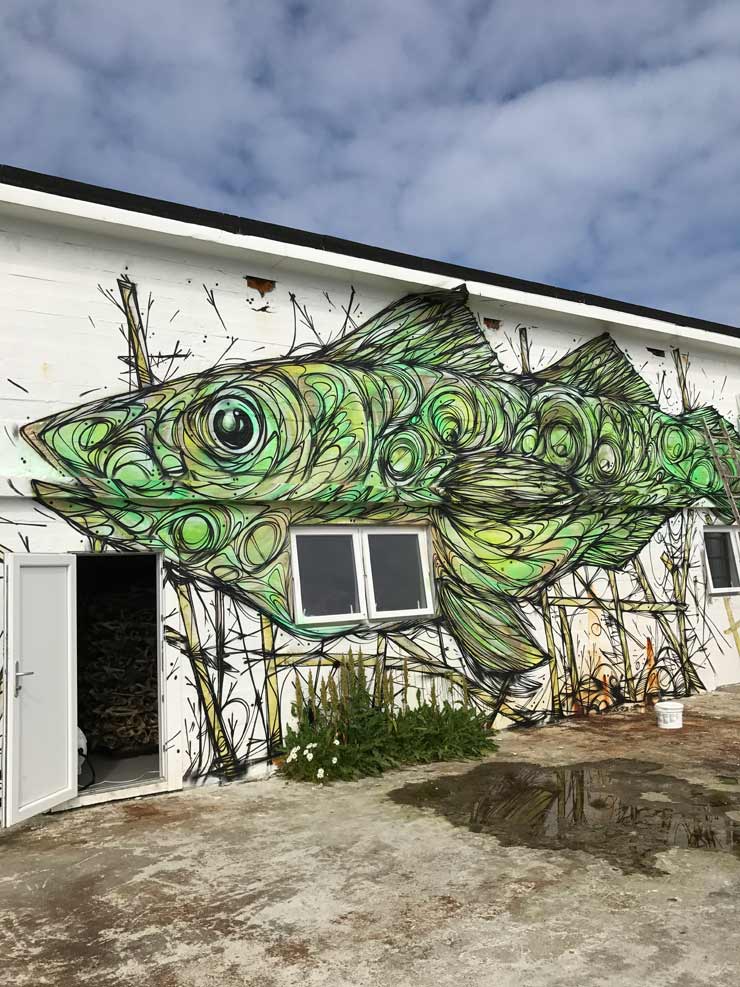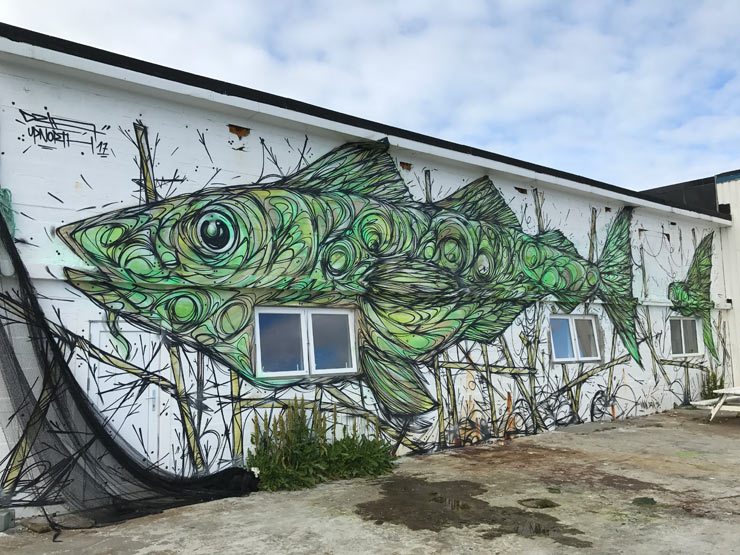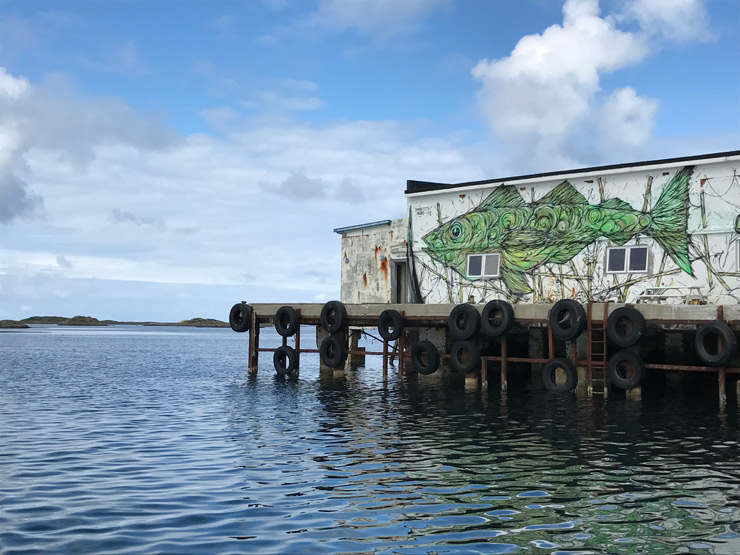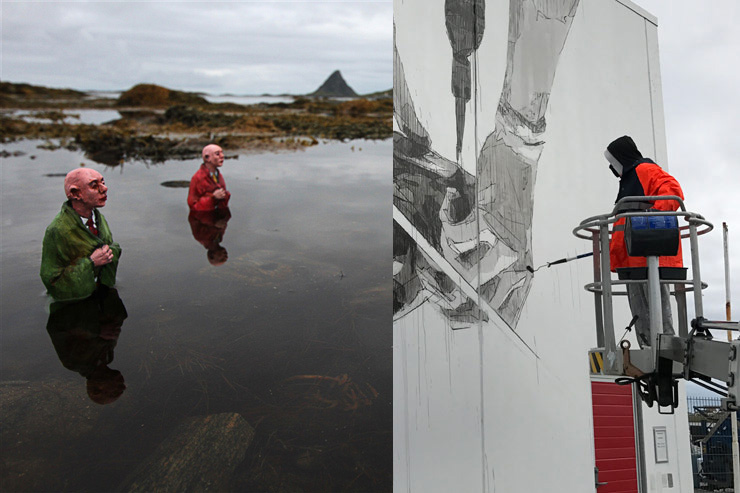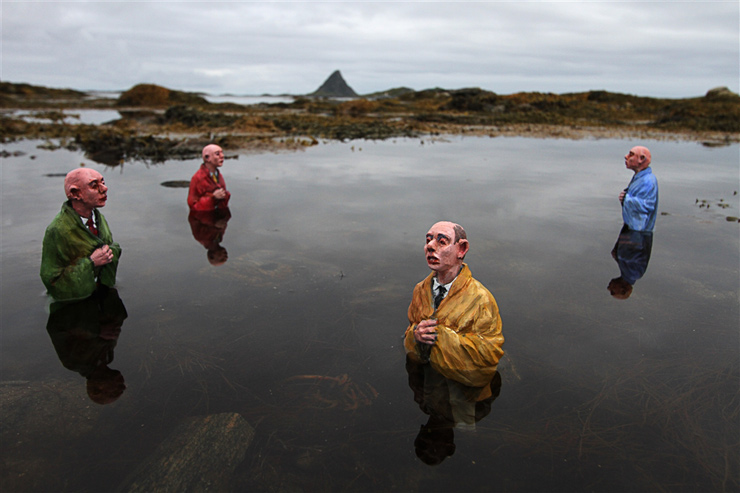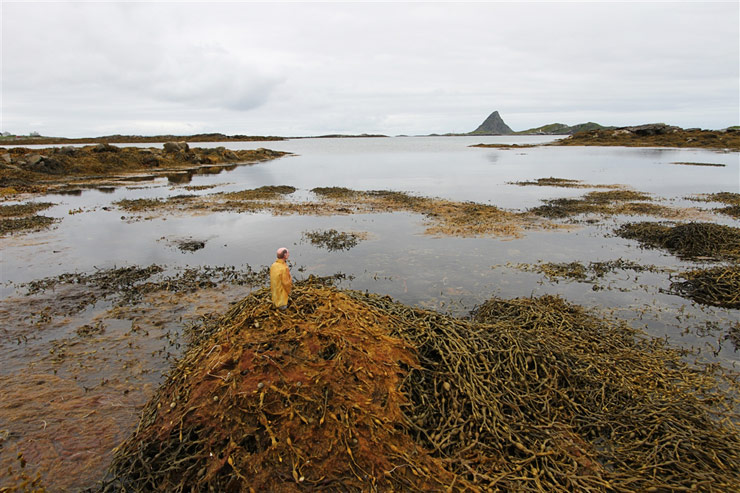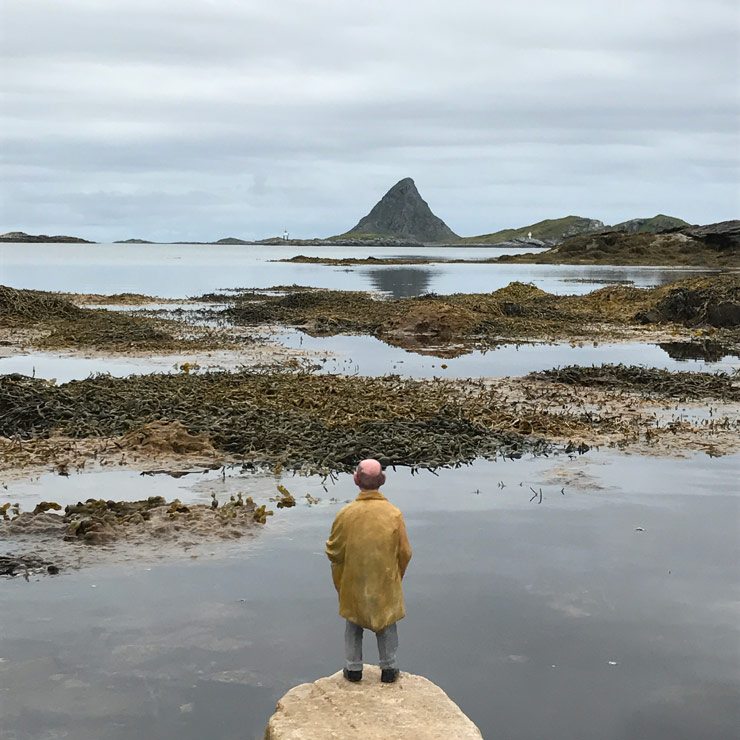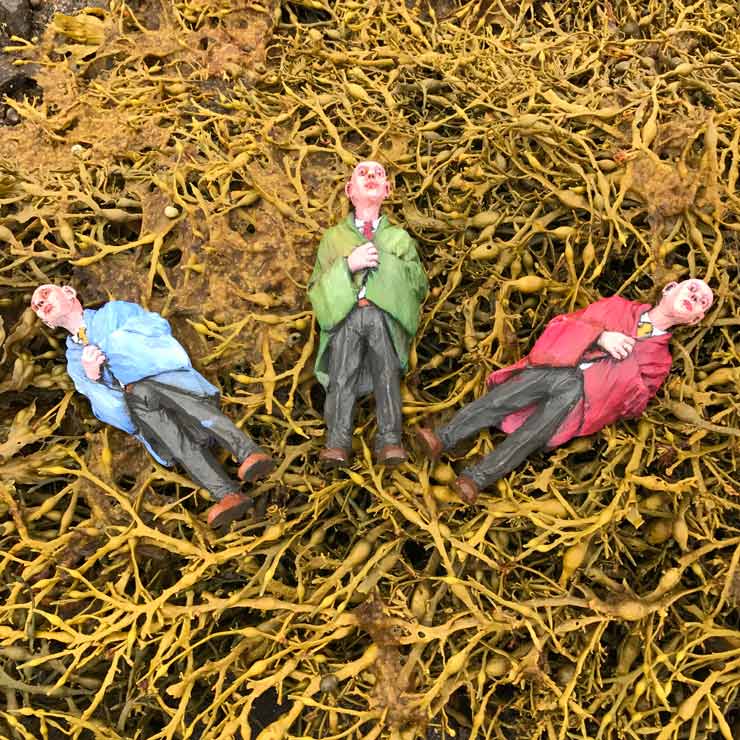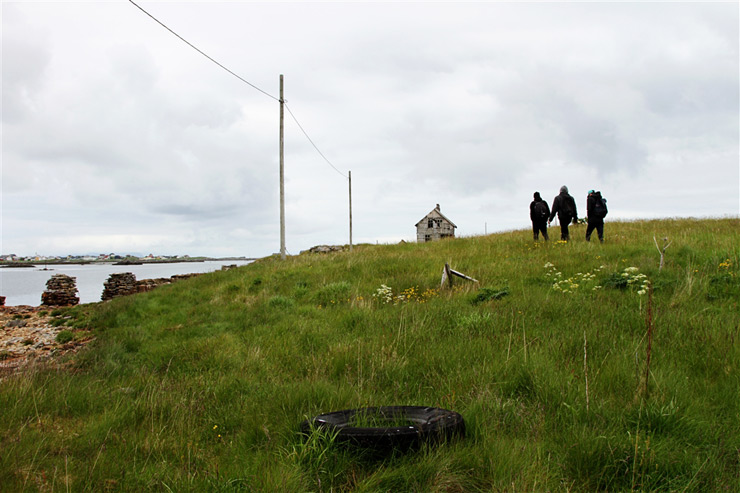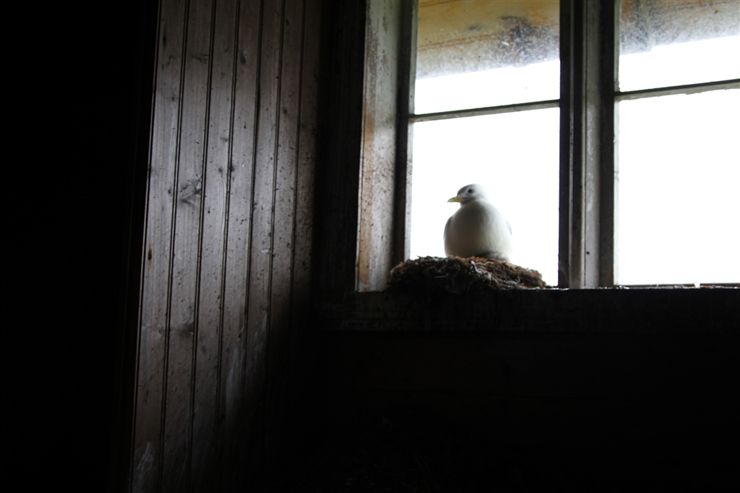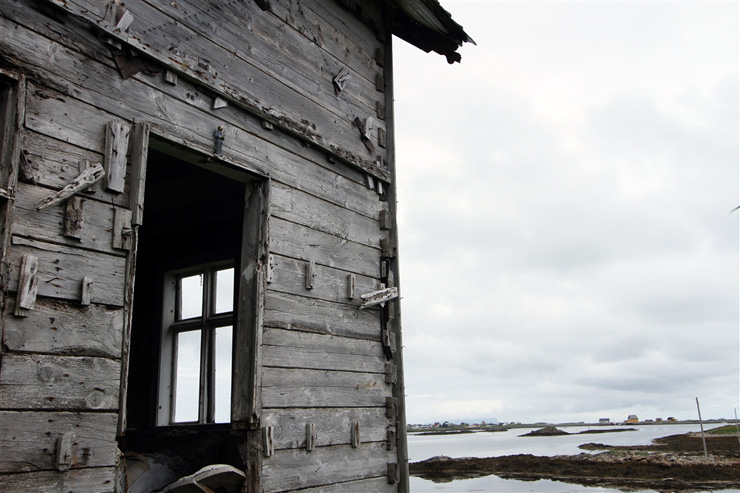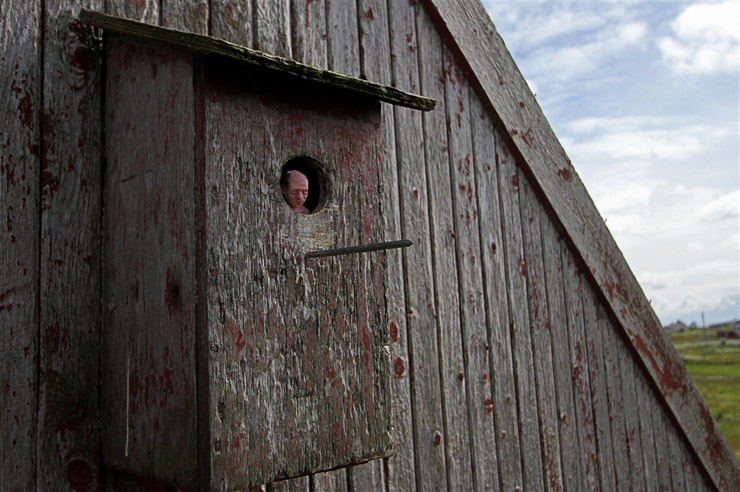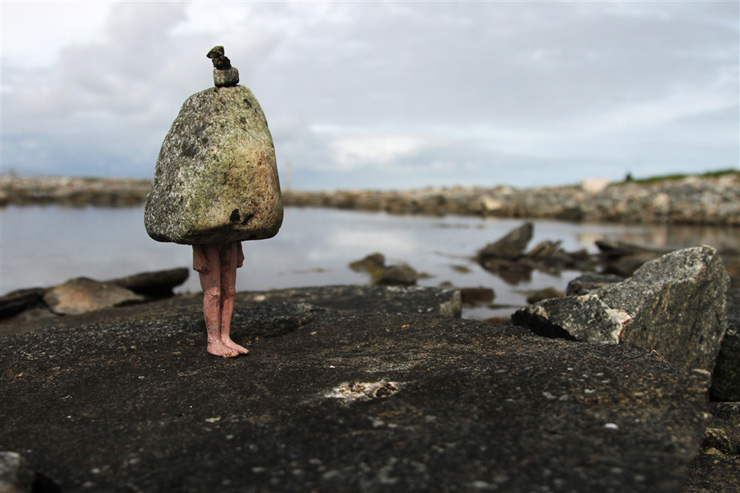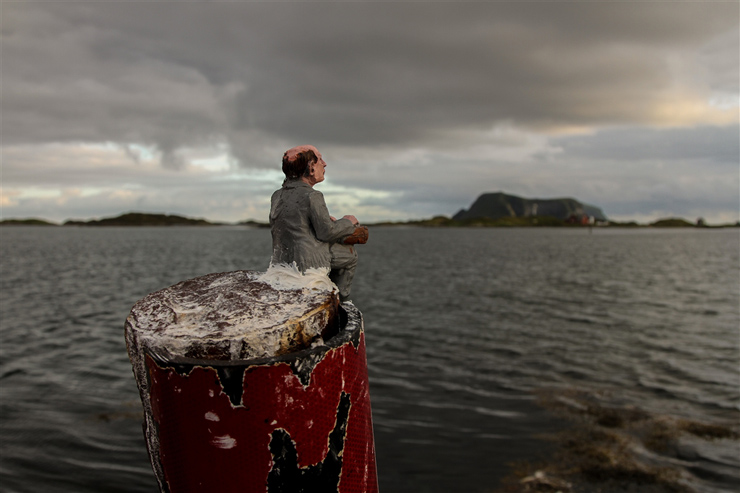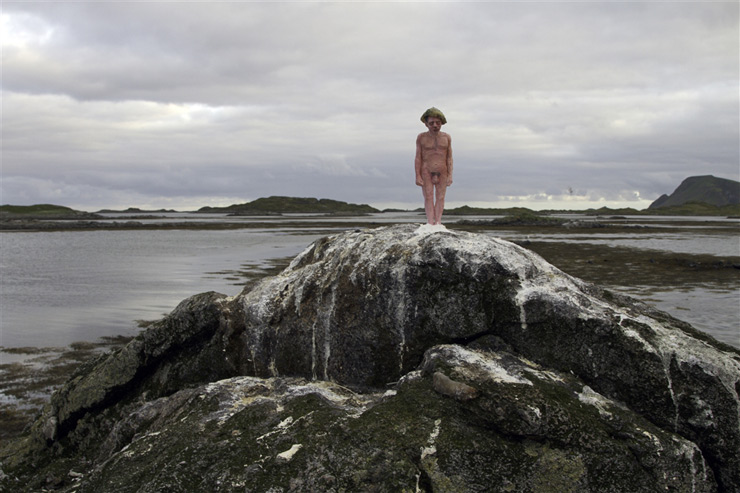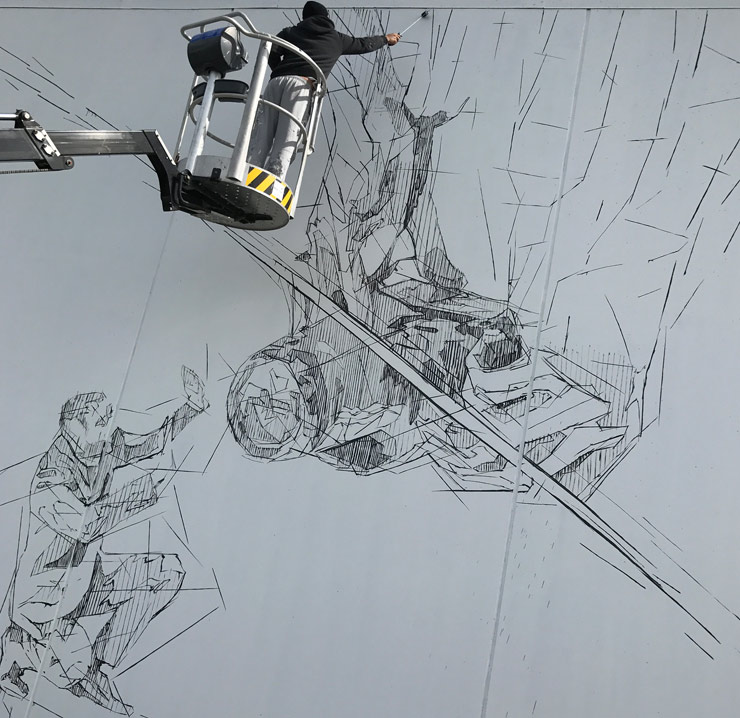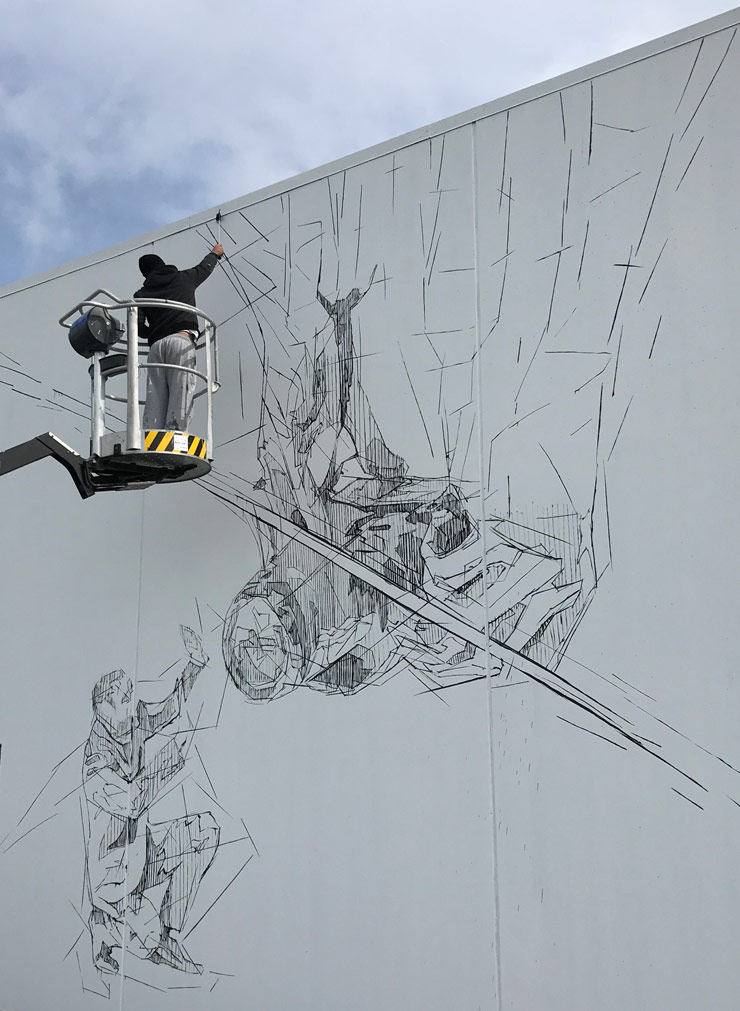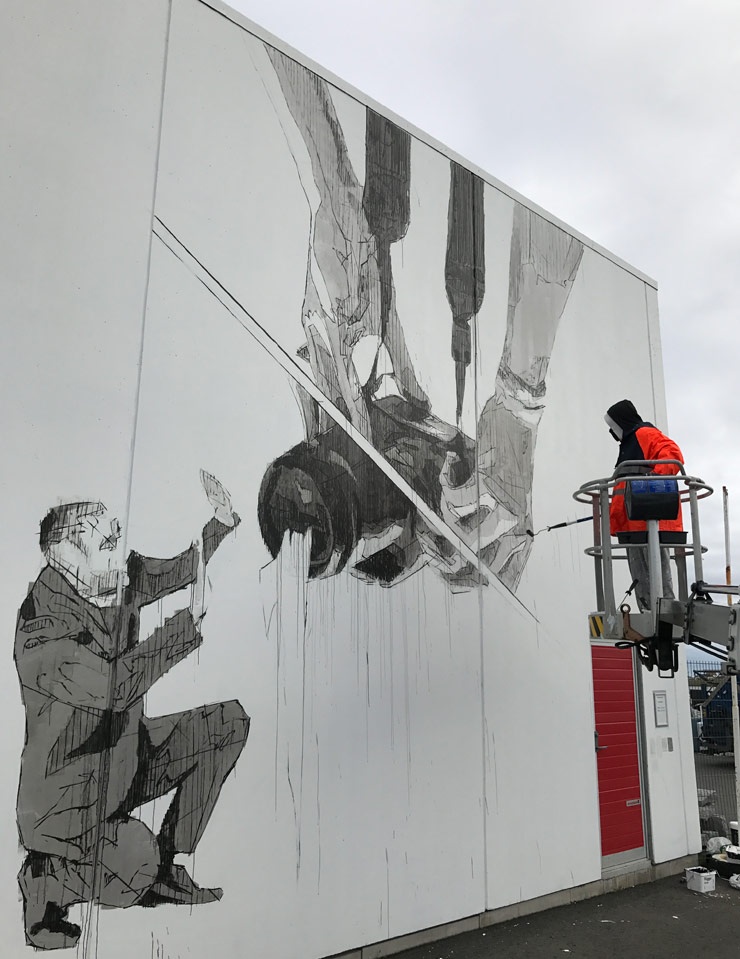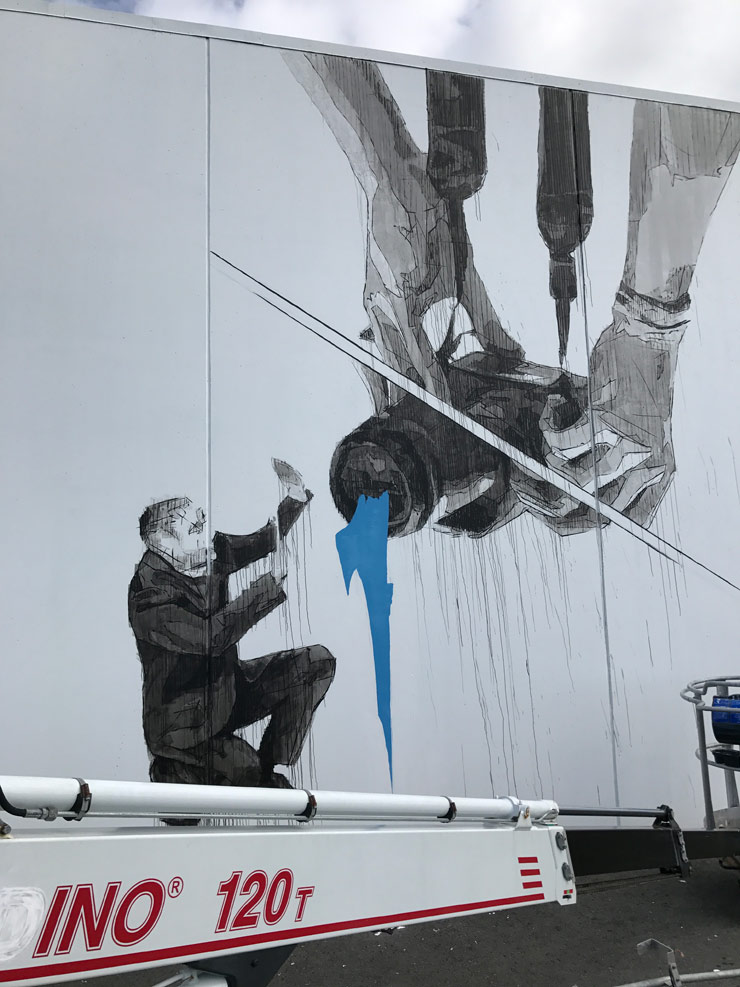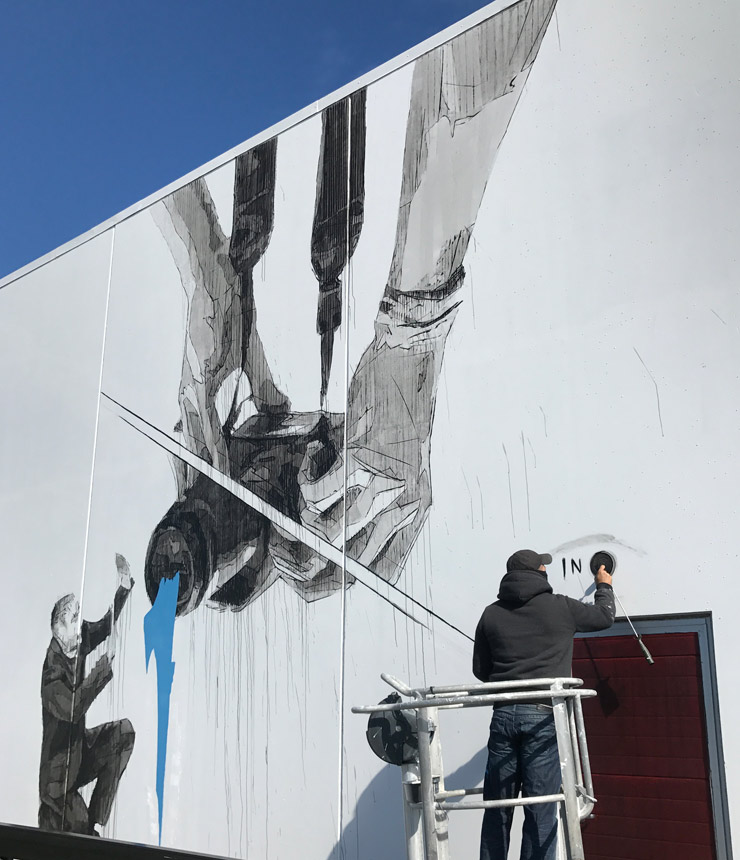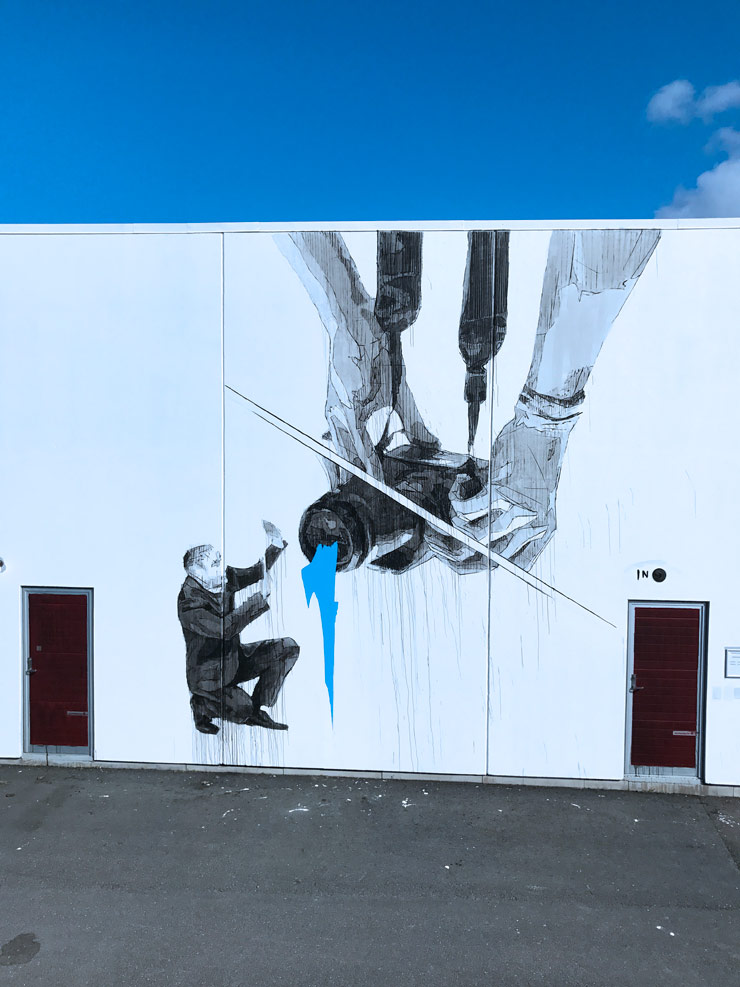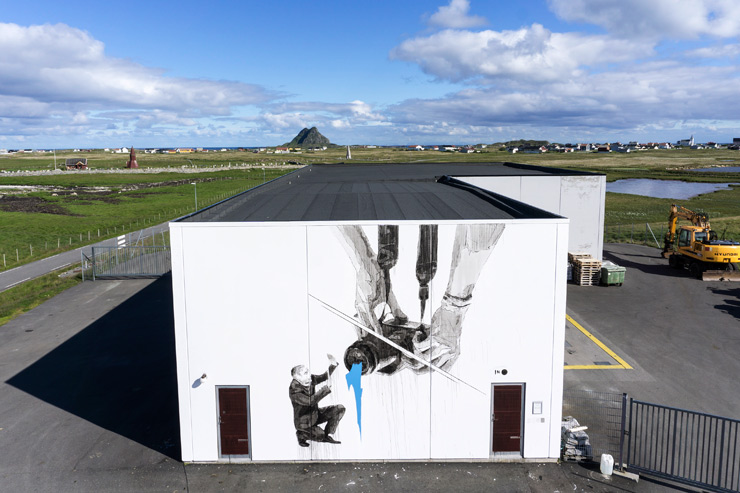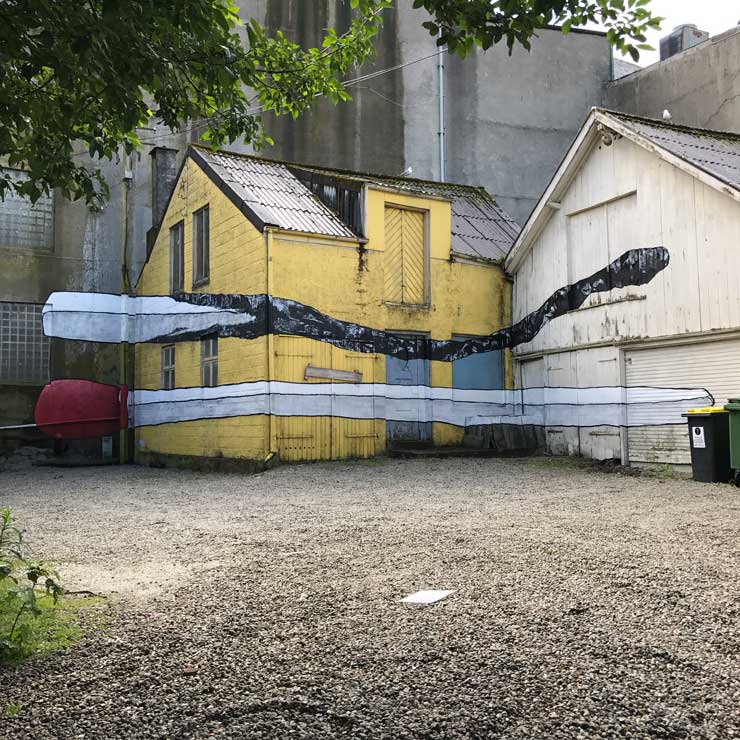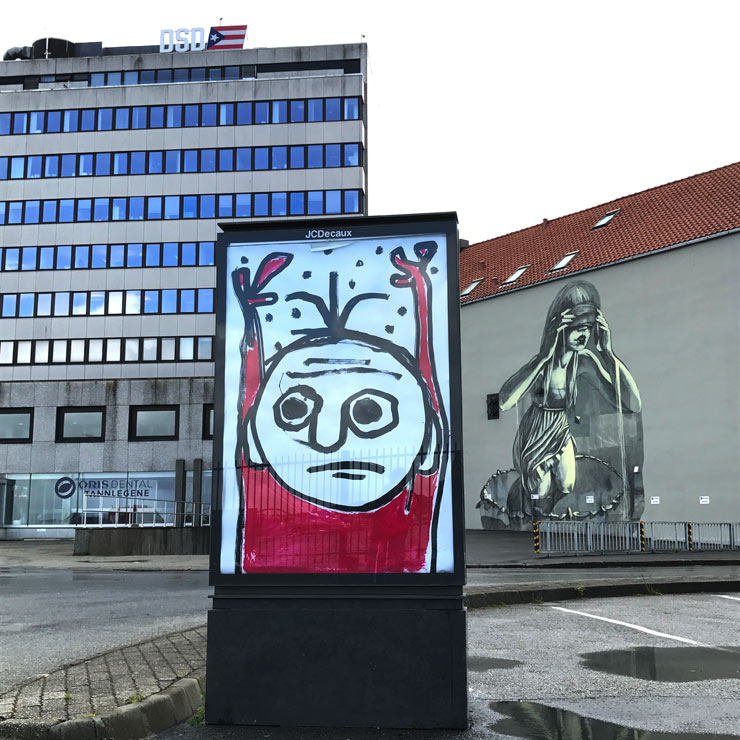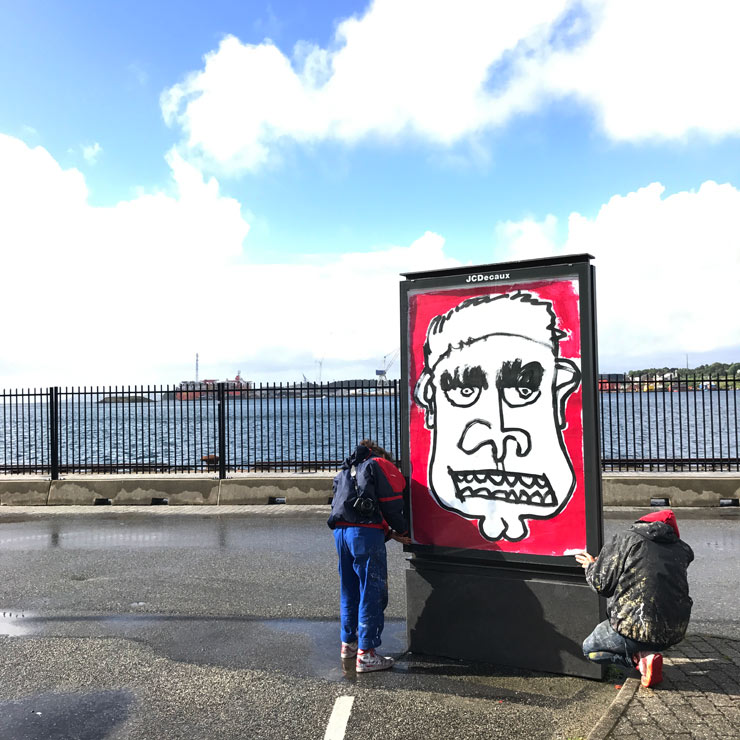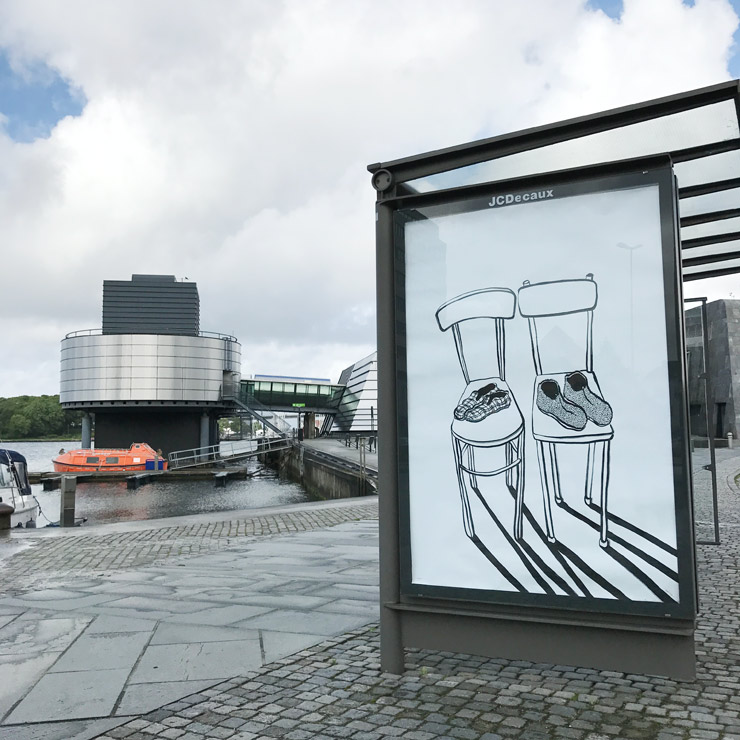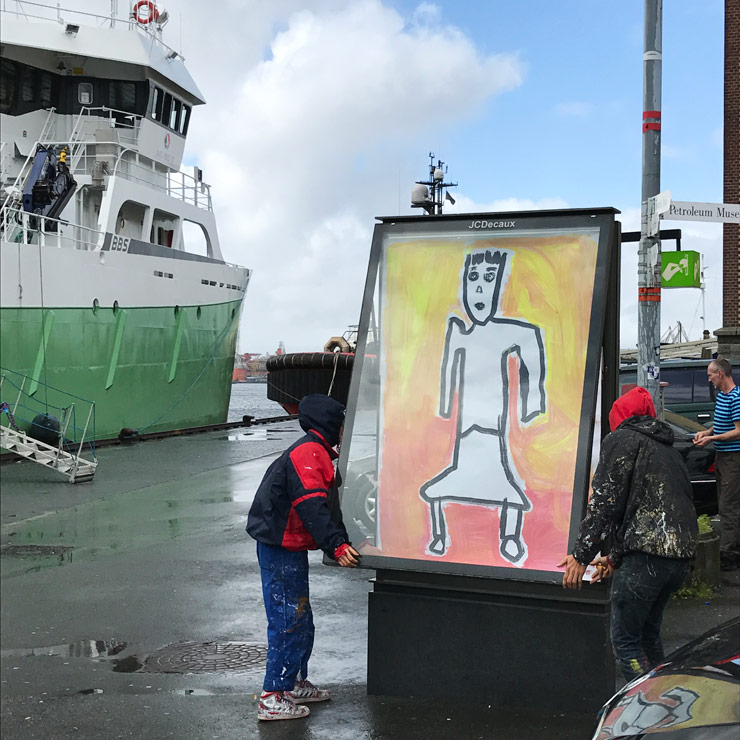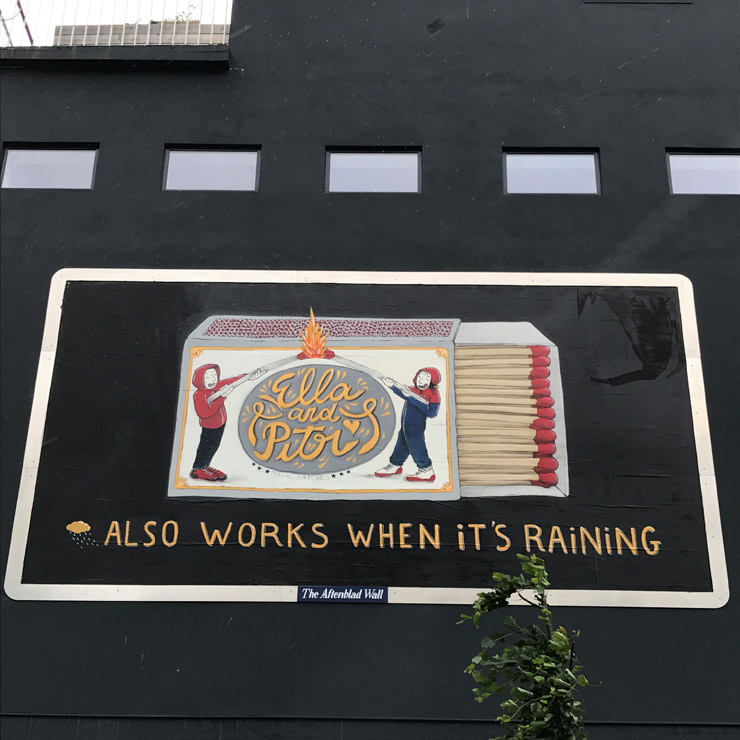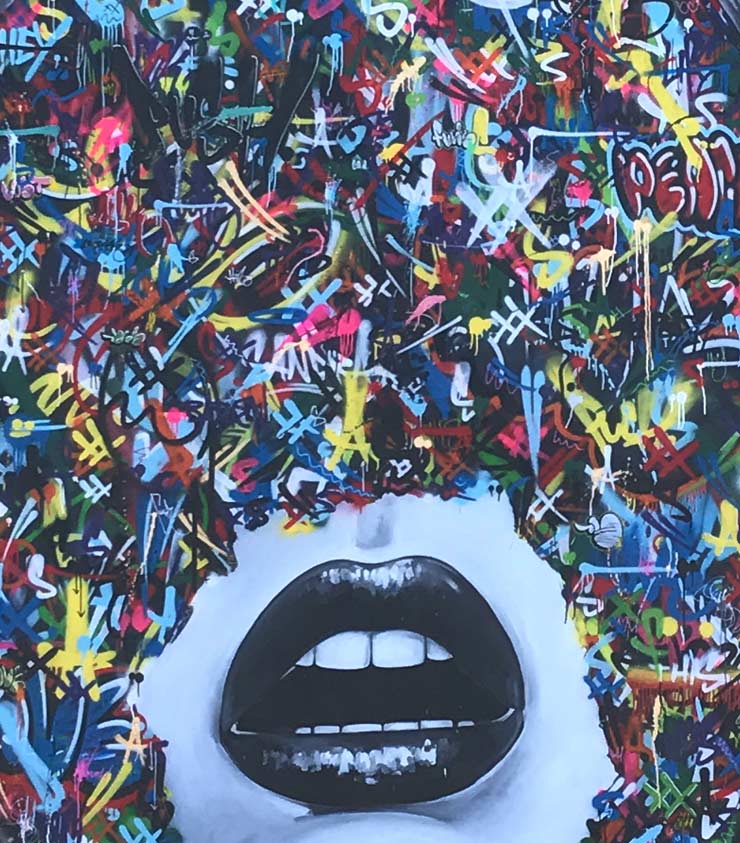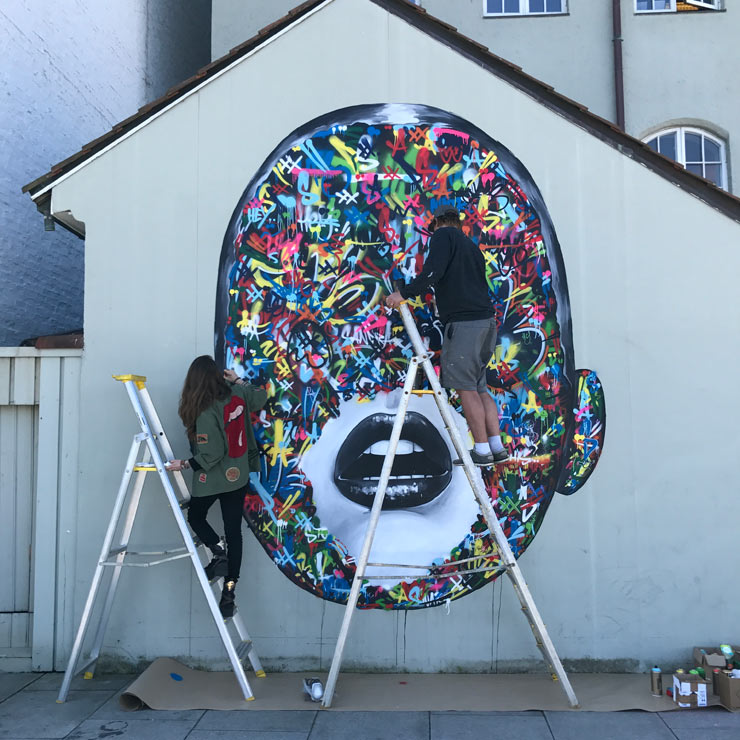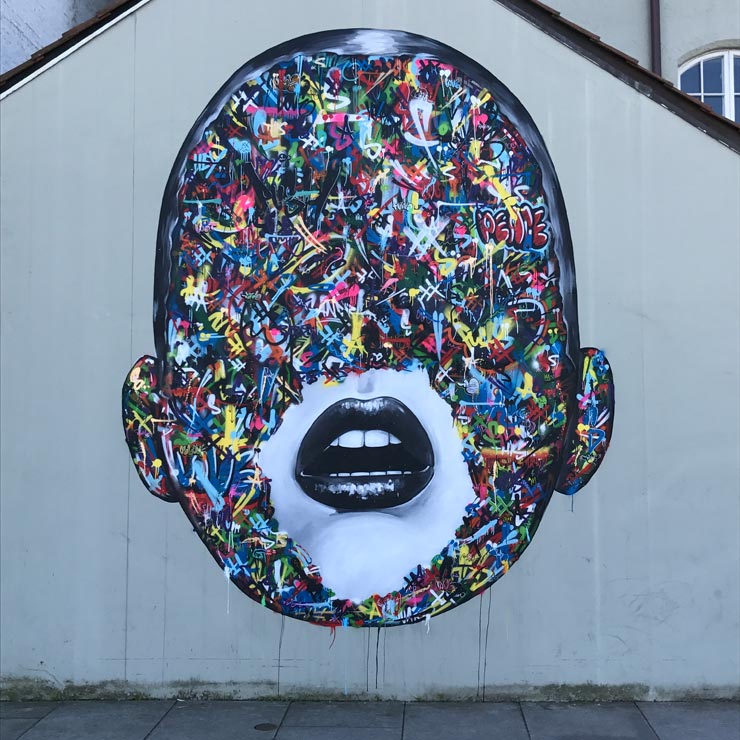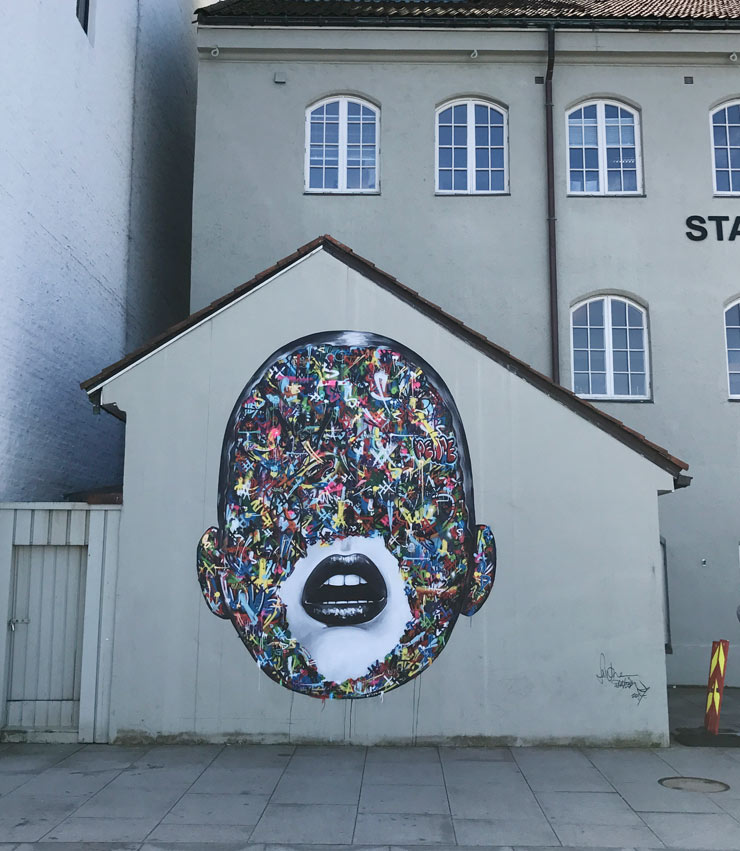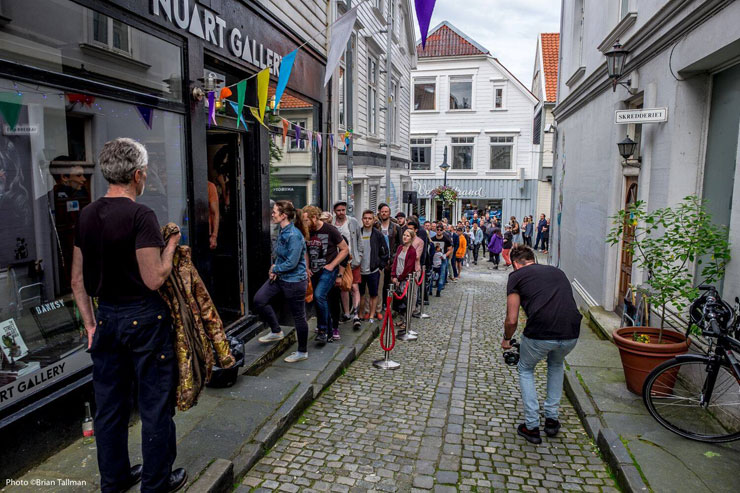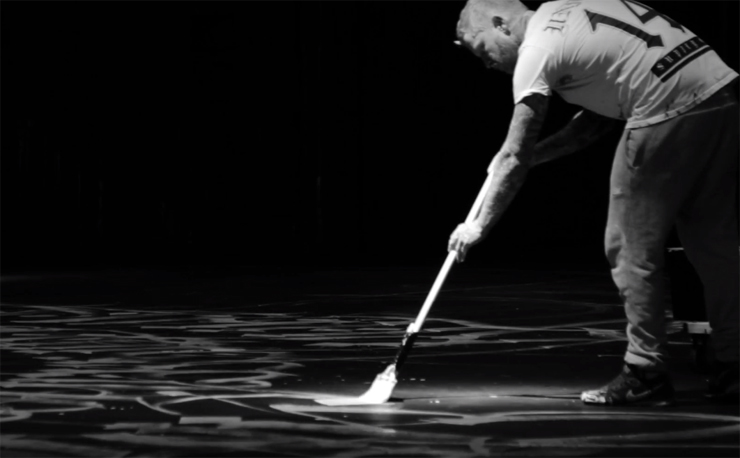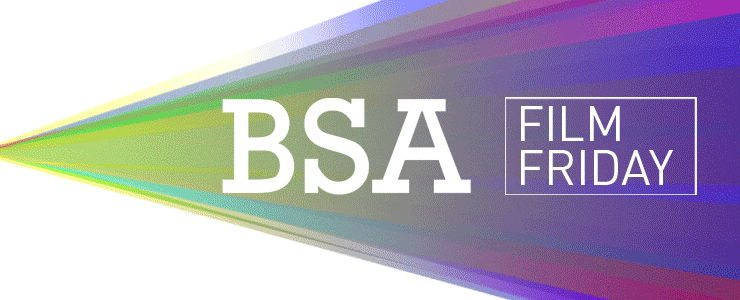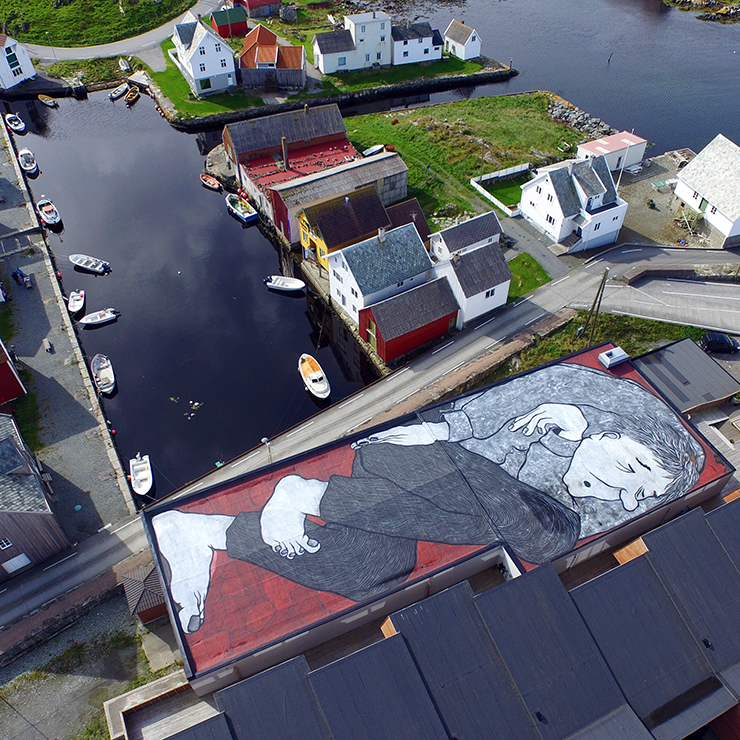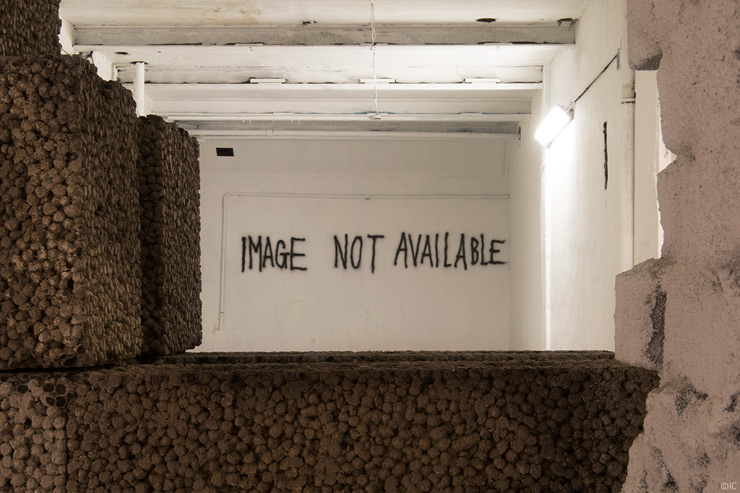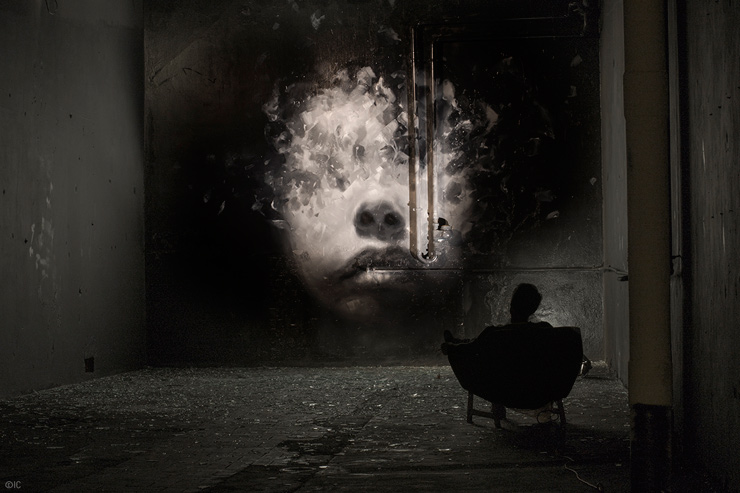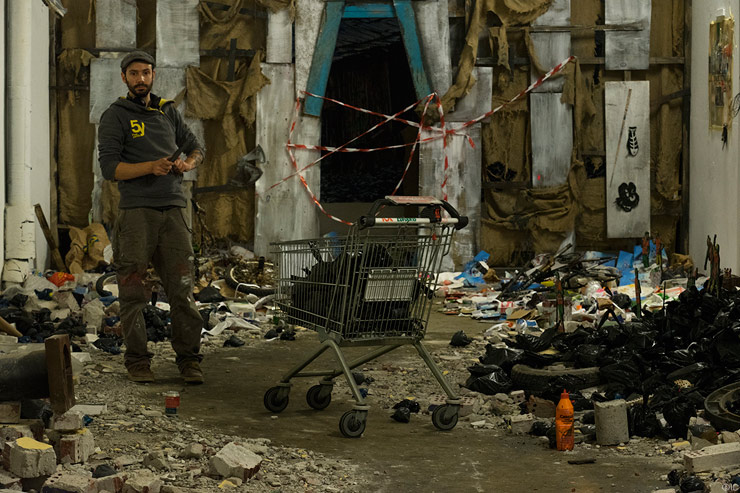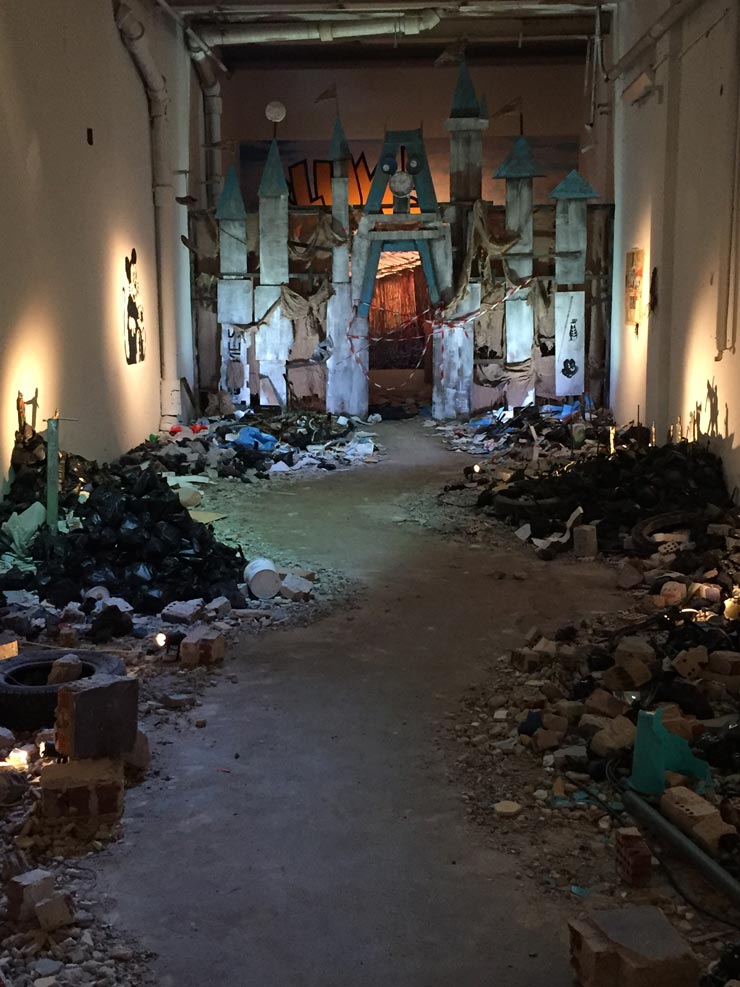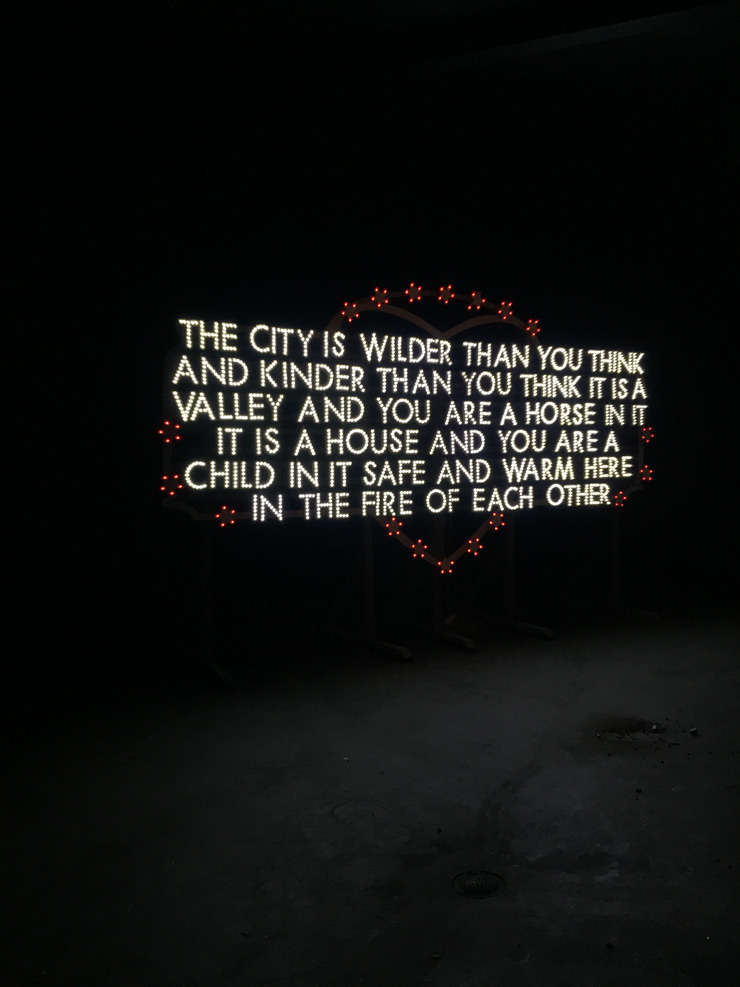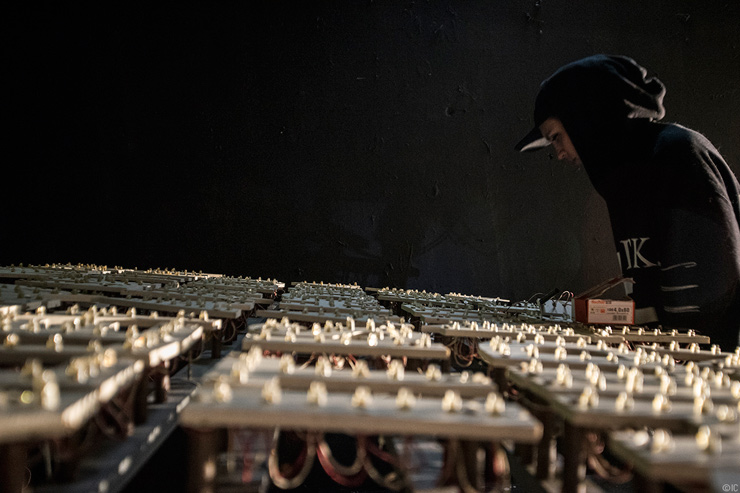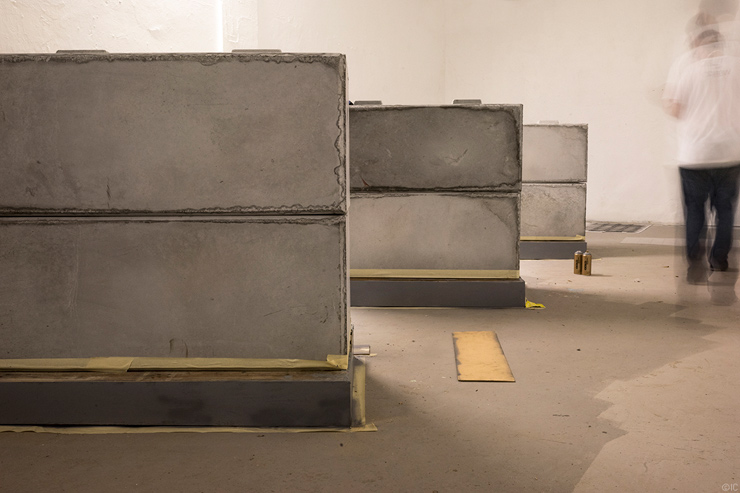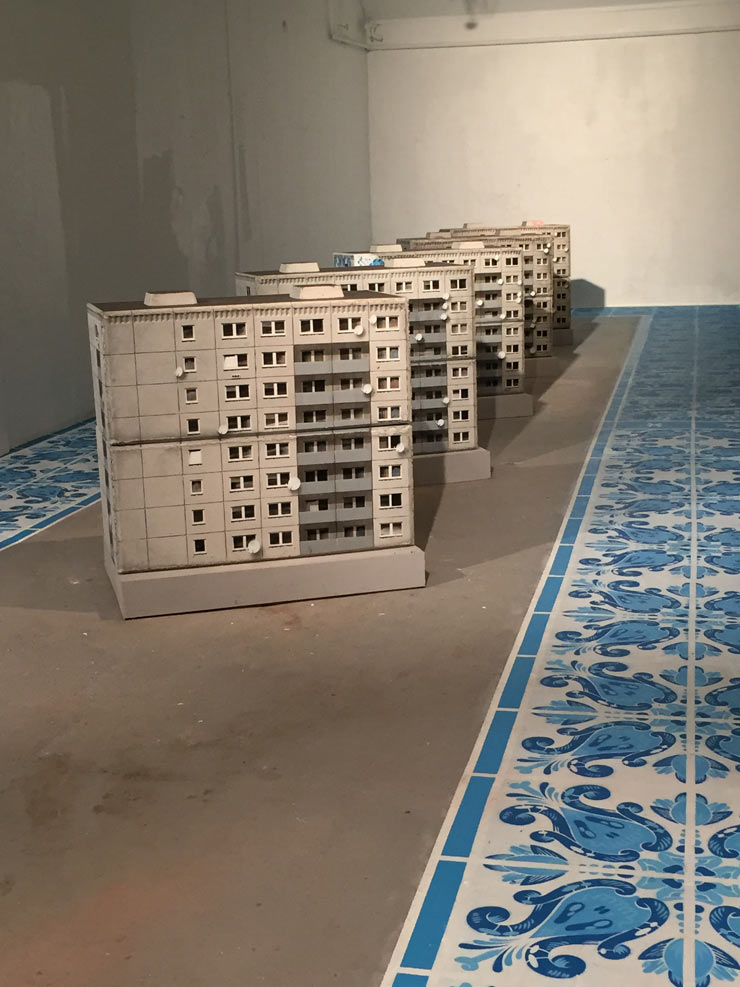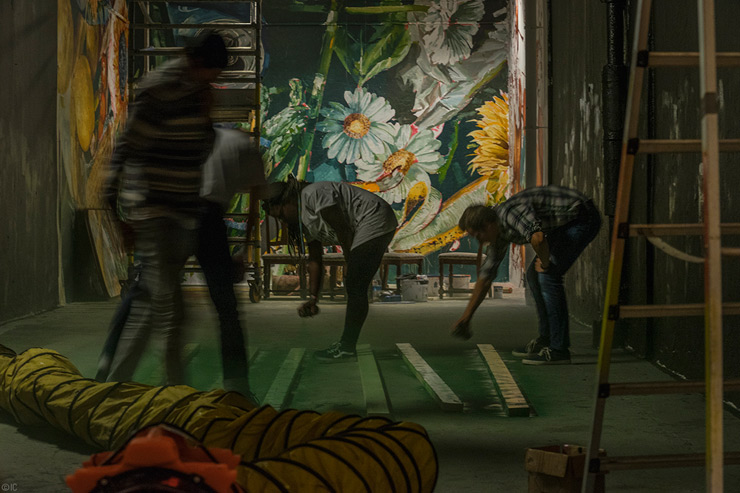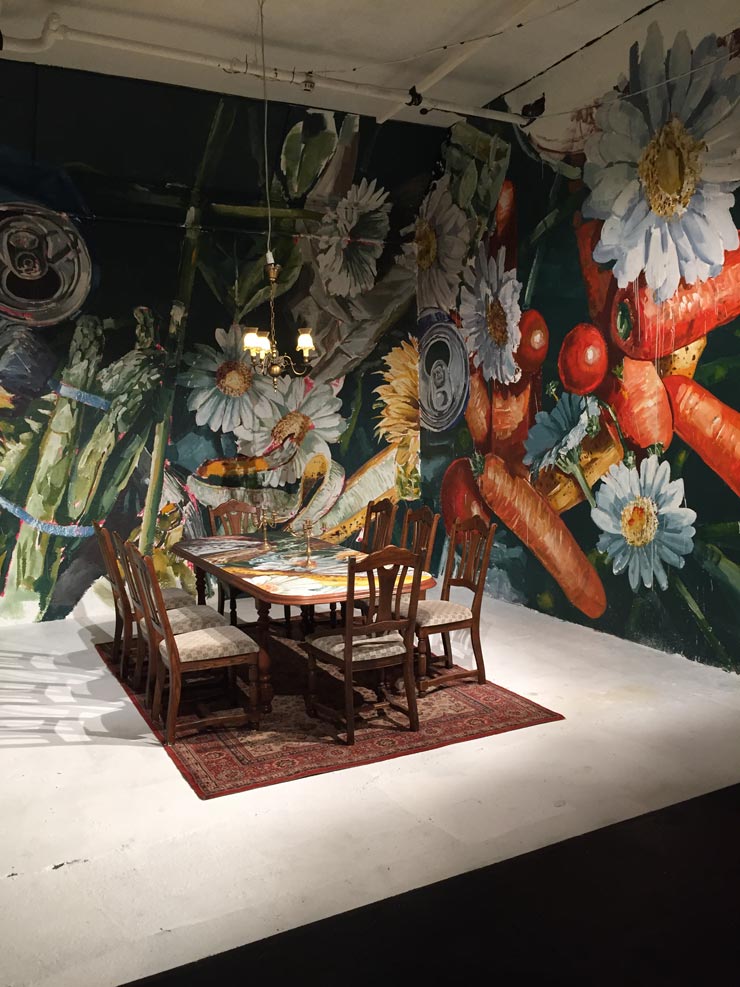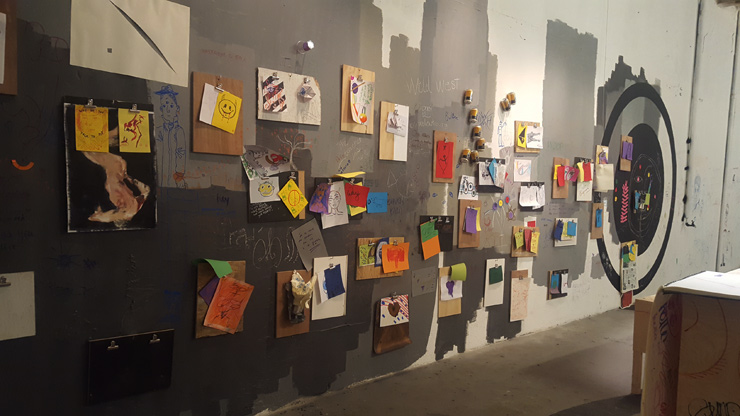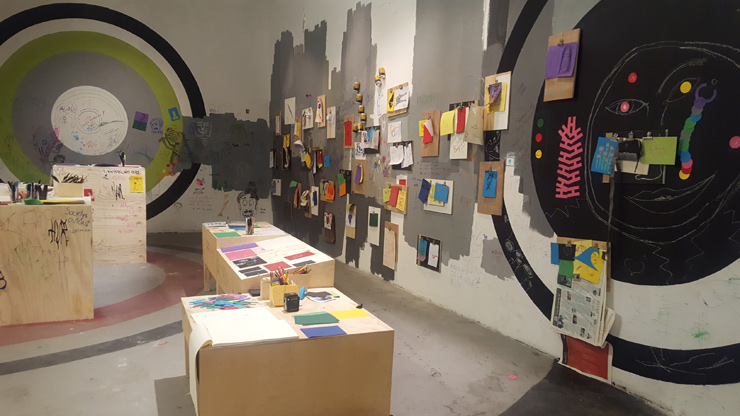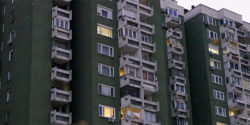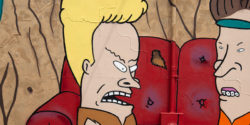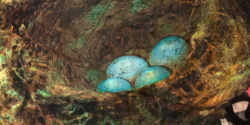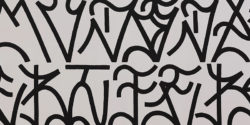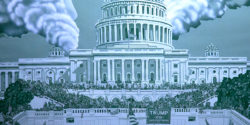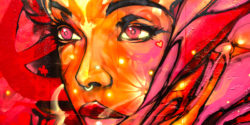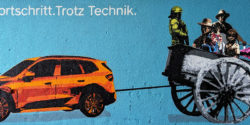The news out of Nuart 2017 is splendiforous and we are feeling celebratorious. These irregularly formed adjectives are in good company with the mismatched yet harmoniously woven characters who together have again selected and summoned artists, academics, kooks and cultural workers to Stavanger for a September synergy of Street Art, public art, and myriad interventionist ideas. It is a highly particular hybrid germinated, conjured, emancipated perhaps, by the free-form and analytical mind of its Founder and Director Martyn Reed. While sowing Nuart seeds spectacularly on the shores of Aberdeen earlier this spring, it is here in Stavanger where the new ideas germinate, are nurtured and given latitude. It is also where the tortoises of conventional thinking are happily rolled onto their backs, little webbed feet waving. We’re pleased today on BSA to publish Martyn’s new manifesto in preparation for Nuart’s festival this autumn in Norway so one might better appreciate the ruminations behind and development of this year’s theme.
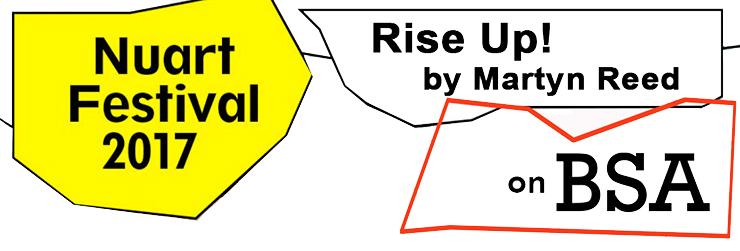
RISE UP!
Nuart produces both temporary and long-term public artworks as well as facilitates dialogue and action between a global network of artists, academics, journalists and policy makers surrounding street art practice. Our core goal is to help redefine how we experience both contemporary and public art practice: to bring art out of museums, galleries and public institutions onto the city streets and to use emerging technologies, to activate a sense of public agency in the shaping of our cities.
Outside of Nuart Festival, our growing portfolio of projects represents an on-going art and education program that seeks to improve the conditions for, and skills to produce, new forms of public art both in Stavanger and further afield. For us, public spaces outside conventional arts venues offer one of the richest, most diverse and rewarding contexts in which this can happen.
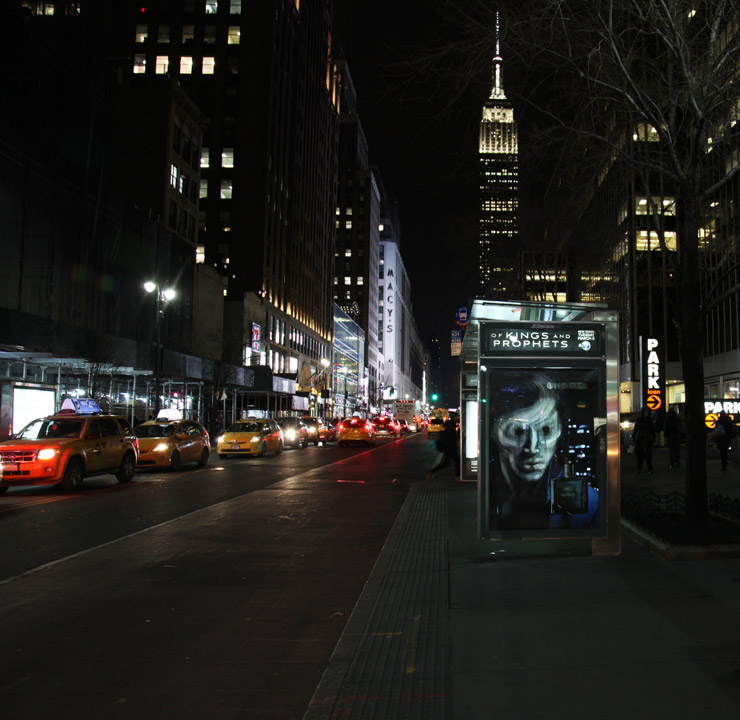
Vermibus (photo © Jaime Rojo)
Our work is guided by our belief in the capacity for the arts to positively change, enhance and inform the way we think about and interact with each other and the City.
The Real Power of Street Art
Nuart festival presents an annual paradigm of hybridity in global sanctioned and unsanctioned street art practice. Through a series of large and human scale public artworks, murals, performances, art tours, workshops, academic debates, education programs, film screenings and urban interventions, supported by a month long exhibition of installations, Nuart explores the convergence points between art, public space and the emergent technologies that are giving voice and agency to a new and more creative civilian identity, an identity that exists somewhere between citizen, artist and activist.
The real power of “street art” is being played out daily on walls, buildings, ad shelters and city squares the world over, and it’s now obvious that state institutions can neither contain nor adequately represent the fluidity of this transgressive new movement. As the rest of the world begins to accept the multiplicity of new public art genres, it is becoming more apparent, that street art resists both classification and containment. The question is, not how can this inherently public art movement be modified or replicated to fit within the confines of a civic institutional or gallery model, but how can the current model for contemporary art museums, galleries and formulaic public art programs, be re-examined to conform with the energy of this revolutionary new movement in visual art practice.
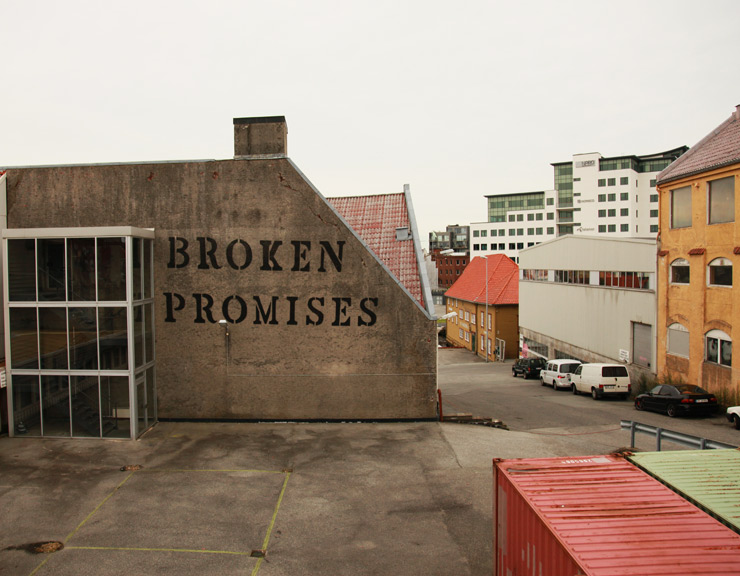
John Fekner in Stavanger (photo © Jaime Rojo)
In the 1990’s, Situationist concepts developed by philosopher Guy Debord, surrounding the nature of “The City”, “Play” and the “Spectacle”, alongside sociologist Henri Lefebvre’s theories exploring the rights to shape our own public and mental space, came together to form an emergent adbusting “artivism”, which now forms the foundation of street art practice. Radical cultural geographer David Harvey has stated, “The right to the city is far more than the individual liberty to access urban resources, it is a right to change ourselves by changing the city”.
It is here, at the intersection between philosophy, geography, architecture, sociology, politics and urbanism, that Nuart situates itself, it exists as a critique of the colonization of everyday life by commodity and consumerism, whilst recognizing that one of the only radical responses left, is to jettison the hegemonic, discursive and gated institutional response to capitalism, and engage it directly where it breeds and infects the most, in our urban centers.
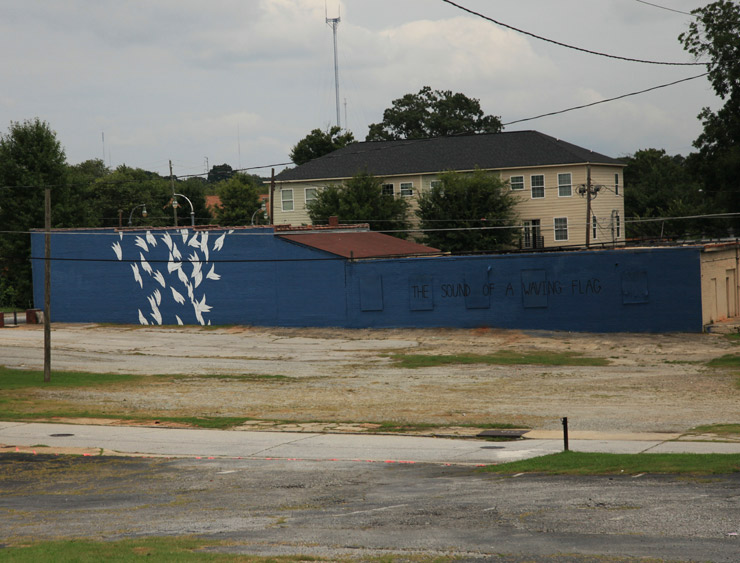
Know Hope (photo © Jaime Rojo)
The challenge for a new and relevant public art isn’t to attempt to negate capitalisms neoliberal market logics with an ever more dominant liberal discourse, both are ultimately mired in a conflict that on the surface simply serves to feed the polarization and spectacle that we’re attempting to transcend. What we need is the active participation of citizens in the creation of their own holistically imagined environments, both physical and mental, a direct and collective response to space that leads to the shaping of place. A place in which the disengaged and passive citizens desired and ever more manipulated by market forces, are inspired to re-make themselves. Nuart proposes that the production of art in public spaces outside conventional arts venues offers the community, not only the most practical, but also the richest, most relevant and rewarding contexts in which this can happen.
It is in this “remaking” of self, this deep desire to engage with the world, to develop civic agency and purpose, that transcends identity, gender and class, and enables those locked out of the arts by a post-Adorno obscurant lexicon (eh?), that street art delivers. It offers an opportunity to reconnect, not only with art, but also with each other. Hundreds of people covering a vast swathe of demographics, from toddlers and single moms to refugees and property barons, on a street art tour conversing with each other, are testament to this.

±maismenos± (photo © Steven P. Harrington)
We believe that when you want to challenge the powerful, you must change the story, it’s this DIY narrative embedded within street art practice, that forms the bonding agent for stronger social cohesion between citizens from a multiplicity of cultures, as our lead artist for 2017, Bahia Shehab will attest. It is this narrative, that is acting as the catalytic agent towards street art becoming a vehicle capable of generating changes in politics as well as urban consciousness.
The question of what kind of city we want cannot be divorced from what kind of person we want to be. The transformation of urban space creates changes in urban life, the transformation of one, being bound to the transformation of the other. What social ties, relationship to nature, lifestyles, technologies, art and aesthetic values we desire, are closely linked to the spaces we inhabit. The “banalization” of current city space, combined with the numbing effect of digital devices that guide us from A to B, have rendered us passive. Consumer cows sucking at the teat of capital trapped in a dichotomy between left and right, instead of right and wrong. And for the most, the hegemonic islands of sanitised cultural dissent we call Art Institutions, are either unable or uninterested, in engaging with the general public in any meaningful way.
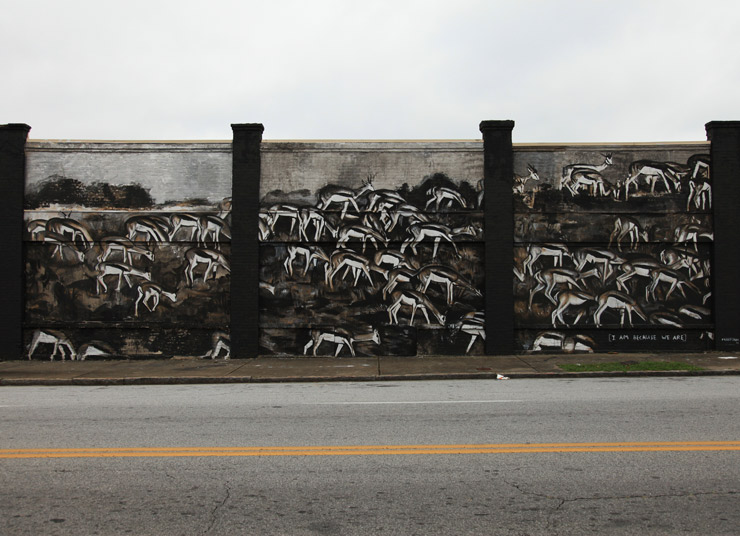
Ricky Lee Gordon (photo © Jaime Rojo)
In the early 2000’s, the evocative power of certain already existing and often crumbling industrial interzones, including that of Tou Scene, our main exhibition space, one that we were instrumental in establishing, gave rise to a new form of engagement with art in urban spaces that is only now being fully recognized and exploited. Street Art is at times of course co-opted and complicit with the “creative destruction” that the gentrification process engenders, but Capitalism’s continuous attempt to “instrumentalize” everything, including our relationship to art should be vigorously resisted. It is these “Stalker-esque” zones of poetic resistance, that initially gave shelter to one of the first truly democratic , non-hierarchical and anti-capitalist art forms, and unlike most cultural institutions, it is still, for the most, unafraid to voice this opinion, important in a time when even our art institutions are beginning to resemble houses of frenzied consumption. Street art exists to contest rather than bolster the prevailing status quo. As such, it is picking up as many enemies as friends within the field of public art.
By attempting to transform the city, street art attempts to transform life, and though by no means is all street art overtly political, it does, in it’s unsanctioned form at least, challenge norms and conventions regulating what is acceptable use of public space. In particular, it opposes commercial advertising’s dominion over urban surfaces, an area that Nuart are active in “taking over” throughout the year and in particular during the festival period. Our curating initiatives not only aim to encourage a re-evaluation of how we relate to our urban surroundings, but to also question our habitual modes of thinking and acting in those spaces. Street art is not just art using the streets as an artistic resource, but also an art that is questioning our habitual use of public space. Street art doesn’t simply take art out of the context of the museum, it does so whilst hacking spaces for art within our daily lives that encourage agency and direct participation from the public, “Everyone an artist” as Joseph Beuys would have it, and if it is accussed of being produced without academic rigour, we are reminded that he also asked, “Do we want a revolution without laughter?”.
Nuart’s programs are designed specifically to explore and silently challenge the mechanisms of power and politics in public space. Increasingly, we see the rights to the city falling into the hands of private and special interest groups, and yet, we have no real coherent opposition to the worst of it. The 20th Century was replete with radical Utopic manifestos calling for change, from Marinetti’s Futurist manifesto of 1909 to Murakami’s “Superflat” of 2000. Nuart’s annual academic symposium, Nuart Plus, acts as a platform for a resurgency in utopic thinking around both city development and public art practice, and whilst recognizing that street art is often co-opted and discredited by capital, it also recognises that even the most amateur work, is indispensable in stimulating debate and change in a Modern society that has developed bureaucracies resistant to seeing art, once more, as part of our everyday life.
As the Situationst graffiti scrawled on Parisian walls in 1968 stated, Beauty is in the streets, so Rise Up! and support those dedicated to unleashing one of the most powerful communicative practices known to mankind, there’s work for art to be done in the world amongst the living.
Martyn Reed, July 2017
Artists scheduled to participate in Nuart Festival 2017:
Ampparito (ES), Bahia Shehab (EG), Carrie Reichardt (UK), flyingleaps presents Derek Mawudoku (UK), Ian Strange (AU), John Fekner (US), Know Hope (IL), ±maismenos± (PT), Igor Ponosov (RU), Ricky Lee Gordon (ZA), Slava Ptrk (RU) and Vermibus (DE).
 BROOKLYN STREET ART LOVES YOU MORE EVERY DAY
BROOKLYN STREET ART LOVES YOU MORE EVERY DAY